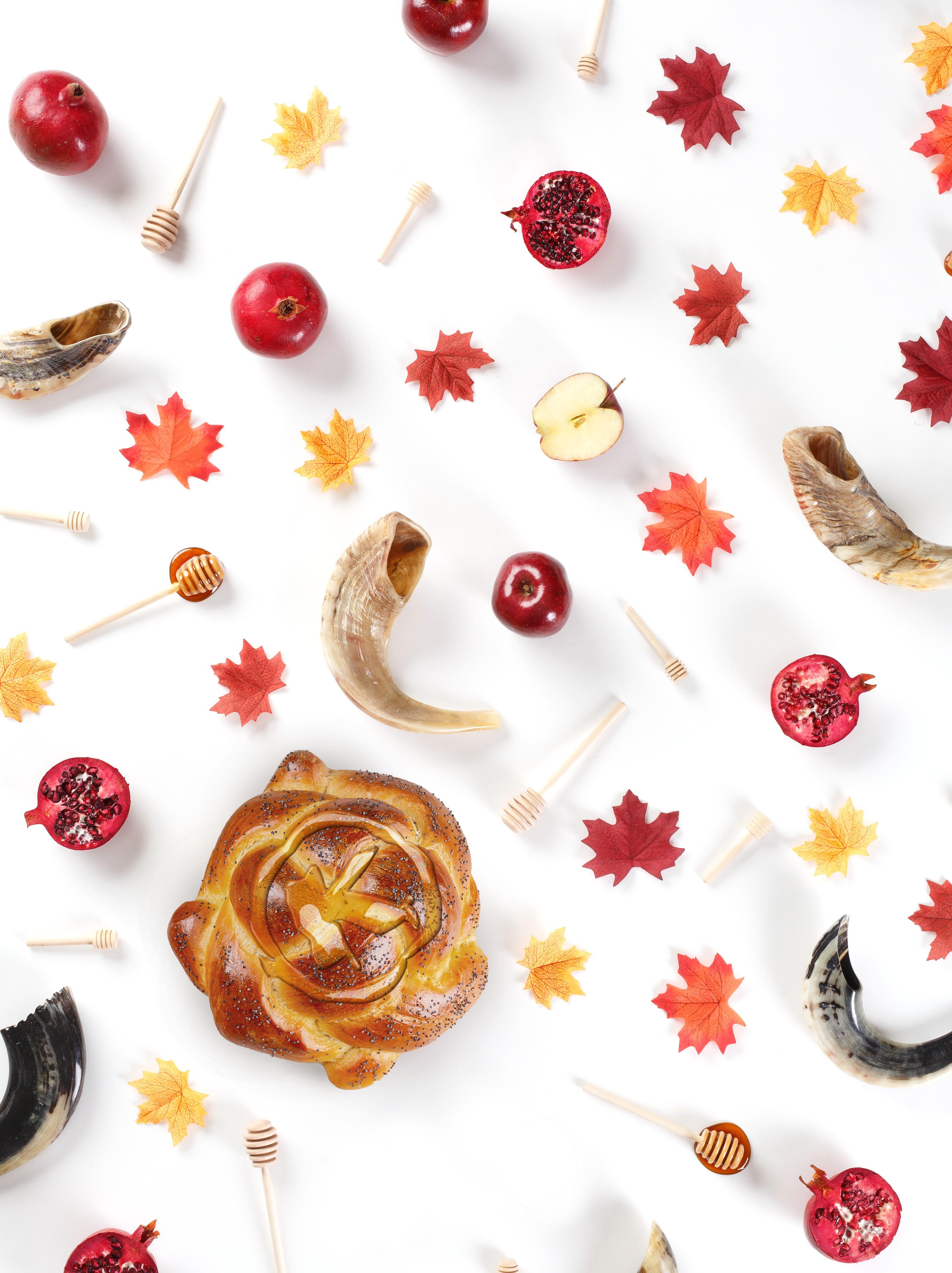
TISHREI 5782
YOU A HAPPY, HEALTHY & SWEET NEW YEAR ד”סב ב”פשת ירשת הקותמו הבוט הנשל CERTIFIED SOUL NUTRITION
WISHING
Dear Reader,
As we approach a new year and look back on the past few months, it sure is hard to comprehend all that has transpired. From Meron and Karlin to Surfside… Chassidus explains that one must learn from all that he sees and hears. What can we learn from a mapoles (a collapsed structure)?
The Lubavitcher Rebbe explains1: Letters and words create sentences and paragraphs; they are like bricks that build a structure. Hashem created the world with the asara ma’amaros (ten words) and our world is an upright structure with everything controlled by Hashem, down to the smallest details. Similarly, a person is a small world and when his structure is standing strong he understands that Hashem runs the world and everything happens for a reason. However, if his own little world suffers a collapse, meaning he is confused and lost, and drifts from the path of Torah, it becomes our responsibility to dig up the “rubble” and help him find his way back. This must be done even on Shabbos, and even on Yom Kippur. There might even be uncertainties; for example, is he there under the rubble? Is he still alive? If there are no survivors in the upper portion of the mound, do we still need to dig to the lowest level?
To all of these questions, the answer is YES. In a spiritual sense, when we ask, “Is he there?” we are asking if he is present. Will he even listen and pay attention? We still need to do all that we can to bring him back. Is he alive? Does the spark of Yiddishkeit still burn in him or is he so far gone that his neshama is completely dormant? We still need to do all that we can to bring him back. And if there are no survivors on the top of the mound do we still need to dig to the lowest level? The top of the mound represents the upper class, the intelligent and sophisticated among us. If we failed to bring them back to a Torah life should we give up on the lower level, the plain, simple folk? To all the above questions, the answer is YES. We must do our best to find every Jew and bring him back to the light of Torah.
Let this New Year be a year that our structures are strong and filled with only happiness and joy and may we be reunited with all those we have lost with the immediate Final Redemption.
Wishing you and your family a kesiva
Rabbi Chaim Fogelman Editor in Chief, ~ Kosher Executive Kashrus Vaad
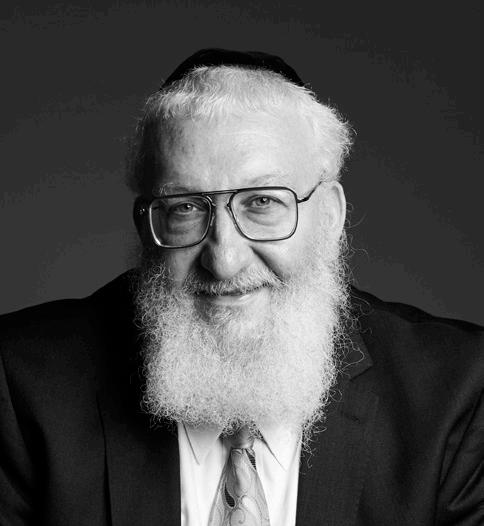

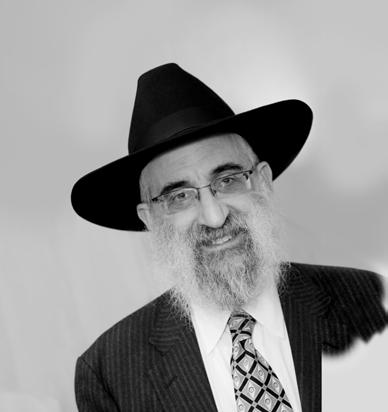
v’chasima tovah, shana tovah u’mesukah.
1 Excerpted from the Rebbe’s Reshimos 16. KOSHER SPIRIT Tishrei 5782 EDITOR-IN-CHIEF: Rabbi Chaim Fogelman EDITOR:Dina Fraenkel DESIGN: Spotlight Design We welcome your comments, submissions and letters to the editor. Mail: 391 Troy Avenue, Brooklyn, NY 11213 Email: editor@kosherspirit.com © 2021. No portion of this publication may be reprinted without written consent from the publisher. RABBI BEREL LEVY OB"M and RABBI DON YOEL LEVY OB"M, who set the standards of kashrus at ~ Kosher Certification and who inspire us daily to perpetuate and uphold their legacy. is
dedicated to
3 SHARE YOUR SPIRIT 4 FROM THE DESK OF RABBI SHLOMO WEINFELD 6 HEALTHY SPIRIT Fall Superfoods 7 A SHMITTA MIRACLE 8 TISHREI RECIPE: Braised Maple Lamb Shoulder Chops 10 REMEMBERING RABBI DON YOEL LEVY OB”M Why Does Bamboo Schach Need a Hechsher? 12 SHOULD I EAT THIS? By Rabbi Sholom Kesselman 15 SUPERMARKETS AND SYMBOLS By Fraida Simon 16 THE MITZVAH OF HAFRASHAS CHALLAH By Rabbi Sholom Ber Lepkivker 21 EYE ON KOSHER: SUGAR By Rabbi Sholom Ber Hendel 22 CHASSIDIC INSIGHTS: ONE DAY 23 SOUL NUTRITION by Rabbi Chaim Fogelman
photo credit: Marko Dashev
The past year has seen some great challenges in the world due to COVID-19 and we would like to take this opportunity to thank all of our rabbanim and staff, and especially our devoted mashgichim for going above and beyond the call of duty for kashrus this year. We would like to give a special mention to our affilates Rabbi Yeshaya Prizant and Rabbi Mordechai Teichman who spent months in China, and Rabbi Shlomo Sharon who spent months in India to ensure the continuation of kosher without compromise.
Share your Spirit
What’s the Brocha? Bananas & Papaya
By Rabbi Sholom Ber Lepkivker, ~ Rabbinic Coordinator

The proper brocha on a banana is “borei pri ha’adamah”, but bananas seem to grow on a tree, so how is that possible?
Actually, banana plants are large, perennial plants which are primarily cultivated for fruit. A banana plant isn’t a tree at all! Its stem is called a pseudostem; it is formed by tightly-packed, overlapping leaves that unravel themselves as the plant grows taller and 90% of the plant consists of water. The pseudo-stem stops growing once all the leaves have unraveled and the stem of the inflorescence — flowers which will turn into fruits — reaches the top. From the fruit stem, the bananas grow out in clusters. The shape in which they grow is similar to a hand which is why they are called “banana fingers”.
At harvest time the banana plantation workers usually cut the stem down with all the banana “fingers” still attached.
In Seder Birkas HaNehenin1, the Baal HaTanya writes that there are three opinions on the parameters for defining a tree for the sake of the brocha.
1. If BOTH the stem and roots remain year to year, it is considered a tree.
2. If the roots remain from year to year, it is considered a tree.
3. In order to be considered a perennial, the entire tree has to remain, including its branches.
The Baal HaTanya concludes that in case of a doubt, one should to say the brocha of “borei
pri ha’adamah”, and he adds that this should be done even l’chatchila.
Now that we know the proper brocha for the banana, let us address another fruit that looks like it grows on a tree, yet the brocha is “borei pri ha’adamah” – the papaya, also called papaw or pawpaw.
Just like the banana, the papaya plant isn’t a tree at all. It isn’t woody and is perennial. The fruits of the papaya are flowers, just like bananas. Therefore, the tree is really an herb. The fruit of the papaya grows out of the stem itself on hook-like individual stems without any branches, unlike the banana by which the true stem could be viewed as a branch coming out of the tree.
According to the Baal HaTanya2 the brocha is “borei pri ha’adamah”, but for a different reason. The discussion which was brought above discussed the nature of the tree, while assuming that the banana grows on a branch-like extension. When the fruit grows out of the tree itself, like the papaya, the brocha is “borei pri ha’adamah” according to all opinions.
If one recited the brocha of “borei pri ha’eitz” on a banana by mistake, one would not need to make another brocha, because there is an opinion that classifies the banana plant as a tree. If one makes the brocha of “borei pri ha’eitz” on a papaya, one is required to make the correct brocha of “borei pri ha’adamah”. ~
1 ’ז-’ו ’לה ו”פ
2 םש www.KosherSpirit.com 3
Photo above is a quarantine room in China where one of our rabbis stayed
From the Desk of
RABBI SHLOMO WEINFELD

Chairman of the ~ Executive Kashrus Vaad
This coming year (5782) is a shmitta year. The Torah commands us to work and cultivate our fields for six years and observe the seventh year as a year of rest, Torah study and spiritual transcendence, as it is written: “You may sow your field for six years, and for six years you may prune your vineyard, and gather in its produce. But in the seventh year, the land shall have a complete rest, a Sabbath to Hashem; you shall not sow your field, nor shall you prune your vineyard.”1
The mitzvah of agricultural shmitta actually has two parts: refraining from working the fields AND the sanctified status of the produce that grows during the shmitta year, which affects the sale and purchase of such produce. Although the mitzvah to observe the year of the shmitta applies only within the biblical borders of the Eretz Yisroel, where the land is sanctified, even those who live outside of Eretz Yisroel should be aware of the laws of the shmitta year due to the sanctified status of the crops grown during a shmitta year (kedushas shvi’is).


There are four categories of crops during a shmitta year:

1. Yevul Chu”l (Foreign Crops): These are crops grown outside of the biblical borders of Eretz Yisroel. They do not have kedushas shvi’is and can be sold and purchased. Such produce can be certified by the ~.
2. Yevul Nochri: These are crops grown within the biblical borders of Eretz Yisroel on land that is owned by non-Jews. A non-Jew is not obligated to observe a shmitta year.
4 www.OK.org
1 Vayikra 25:3-4.
Some halachic authorities hold that any crops grown in biblical Eretz Yisroel during a shmitta year have kedushas shvi’is, even if owned by a non-Jew. Most poskim disagree, so the ~ clearly labels the produce as such for those who prefer to be stringent and satisfy all opinions.
3. Heter Mechira – Heter Mechira is a ritual sale that allows a Jewish farmer to sell his fields to a non-Jew for the shmitta year. One issue with heter mechira is that the sale is not recorded in government records, so the majority of poskim do not recognize or accept heter mechira and consider such produce to have kedushas shvi’is. Another issue would be if the land sold under heter mechira is tended by Jewish workers. The Chief Rabbinate of Israel is stringent and permits heter mechira ONLY when all work in the fields is performed by a non-Jew. The ~ does not permit the use of heter mechira produce in ~ certified products or give certification on produce grown under heter mechira.

4. Otzar Beis Din – The Beis Din acts as an agent to distribute the hefker shmitta crop and sell it at cost price just to cover the operating, harvesting and transportation expenses. The crop has kedushas shvi’is and cannot be sent outside of the biblical borders of Eretz Yisroel.2 The ~ does not permit the use of Otzar Beis Din because ~ certified products are often exported out of Eretz Yisroel.
So how does a farmer who observes the laws of shmitta in the most mehudar way (without relying on Heter Mechira or Otzar Beis Din) earn a livelihood? The Torah promises: “I will command My blessing for you in the sixth year, and it will yield produce for three years.”3 It certainly takes a high level of emunah for a farmer to fully observe shmitta.
In truth, we all can observe the labor aspect of shmitta from a spiritual perspective, even outside of Eretz Yisroel. The shmitta year is a “time out” from the preoccupations of the physical, commercial world. While most of us cannot take a full-year sabbatical from our work, the shmitta year is a time to increase in our emunah through Torah study and spiritual pursuits.
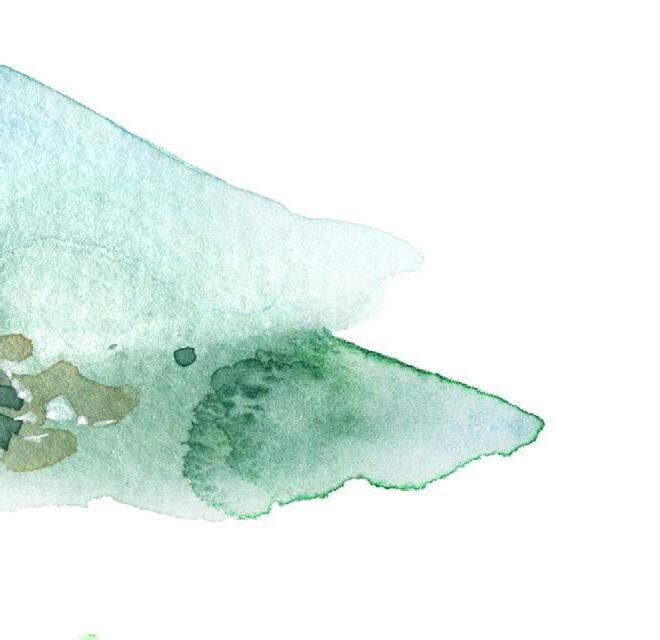
The Talmud (Yoma 35b) mentions Rabbi Eliezer ben Charsom as an example of someone who, despite his status and intense schedule, invested much time in Torah studies. After a person passes on to the next world, he will be asked why he did not set aside time for Torah study every day. He might answer that he had many assets and responsibilities to take care of and no time left to study Torah. The heavenly angels will say to him: “Were you richer than Rabbi Eliezer ben Charsom who owned a huge shipping company and real estate companies that included entire cities, but nevertheless spent most of his time studying the Torah?”
We were fortunate to have our own such example in Rabbi Don Yoel Levy OB”M. He began his day in the early hours of the morning, dedicating himself to the study of Torah and Chassidus, answering halachic questions, and preparing for davening and his shiurim. Later in the day, after Mincha, Rabbi Levy gave a Gemara shiur at the office and devoted time after Ma’ariv to study Halacha and Rambam. Rabbi Levy kept his arduous schedule of shiurim and learning even during his extended trips to the Far East, replete with many kashrus inspections, and his usual heavy workload of reviewing kashrus reports and the enormous responsibility of heading an international kashrus agency.
May it be G-d’s will that we continue to walk in Rabbi Levy’s ways, emulating his strict observance of time and investment in Torah study out of pure Yiras Shomayim, and upholding the highest standards of kashrus in a pleasant manner and with goodwill. May we make good use of the days of the shmitta year and merit the fulfilment of our destiny with the immediate Final Redemption. ~
5 www.OK.org
2 Mishnah Shvi’is 6:5. 3 Vayikra 25:21.
www.KosherSpirit.com 5
PARSNIPS
Parsnips are rich in potassium and a great source of fiber.
FALL SUPERFOODS
Cooler weather doesn’t have to mean the end of fresh fruits and veggies. These superfoods are at their peak during the fall harvest season.
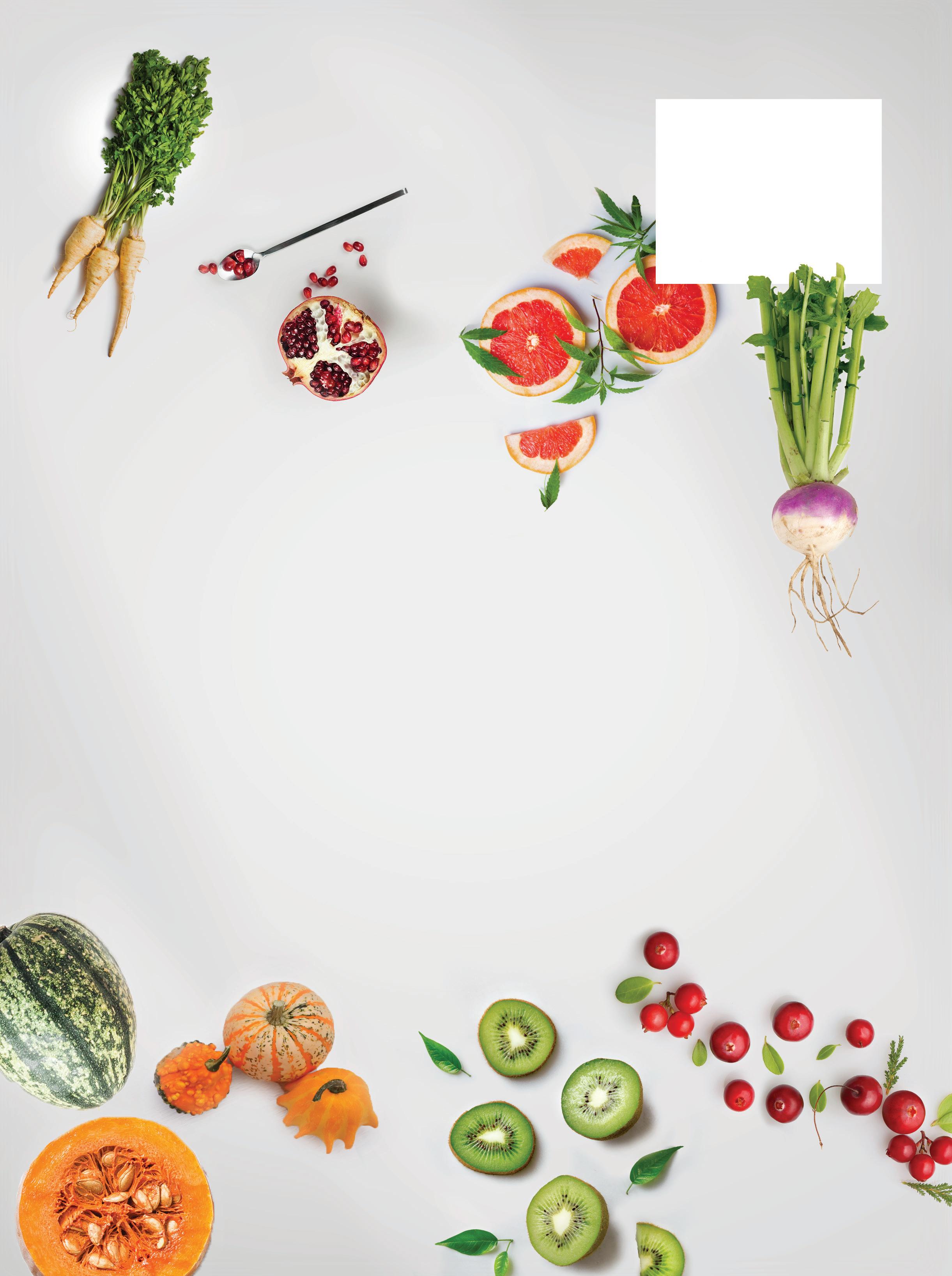
These are an excellent source of Omega-3 fatty acids and vitamin A.
WINTER SQUASH
POMEGRANATES
A symbolic food for Rosh Hashanah, they are very high in antioxidants, vitamin C and folate.
GRAPEFRUIT
It provides more than 75% of the daily recommended amount of vitamin C and can help lower cholesterol.
PUMPKIN
These are rich in potassium, B vitamins and high in fiber.
Kiwis contain high levels of vitamin C, plus potassium and copper.
KIWIS
Cranberries are high in fiber and vitamin C, which can help improve cholesterol and blood pressure.
CRANBERRIES
RUTABAGAS
They provide a full day’s supply of vitamin C, plus magnesium and calcium. Try them spiralized as a noodle replacement.
6 www.OK.org
SHMITTA MIRACLE
AThe Komemiyut moshav in Israel is one of the only places in Israel where shmitta has always been observed to the letter. Amazingly, despite the difficult situation, the moshav always managed to survive and even thrive. The moshav’s rabbi, Rabbi Binyamin Mendelson, recorded in his letters many miracles the moshav farmers witnessed while observing shmitta.
Perhaps the best-known incident of hashgocha protis happened in 1953. “It was just after a shmitta year and we didn’t have wheat to sow,” wrote Rabbi Mendelson. “We didn’t want to use wheat seeds from the shmitta year, and the only seeds we could find from the sixth year were broken and unfit for planting. The farmers came to ask for my advice and I told them that since they couldn’t find other wheat they should ‘maamin bechai haolamin vezorea’ (believe in the eternally-living and plant) as the Talmud Yerushalmi says.”
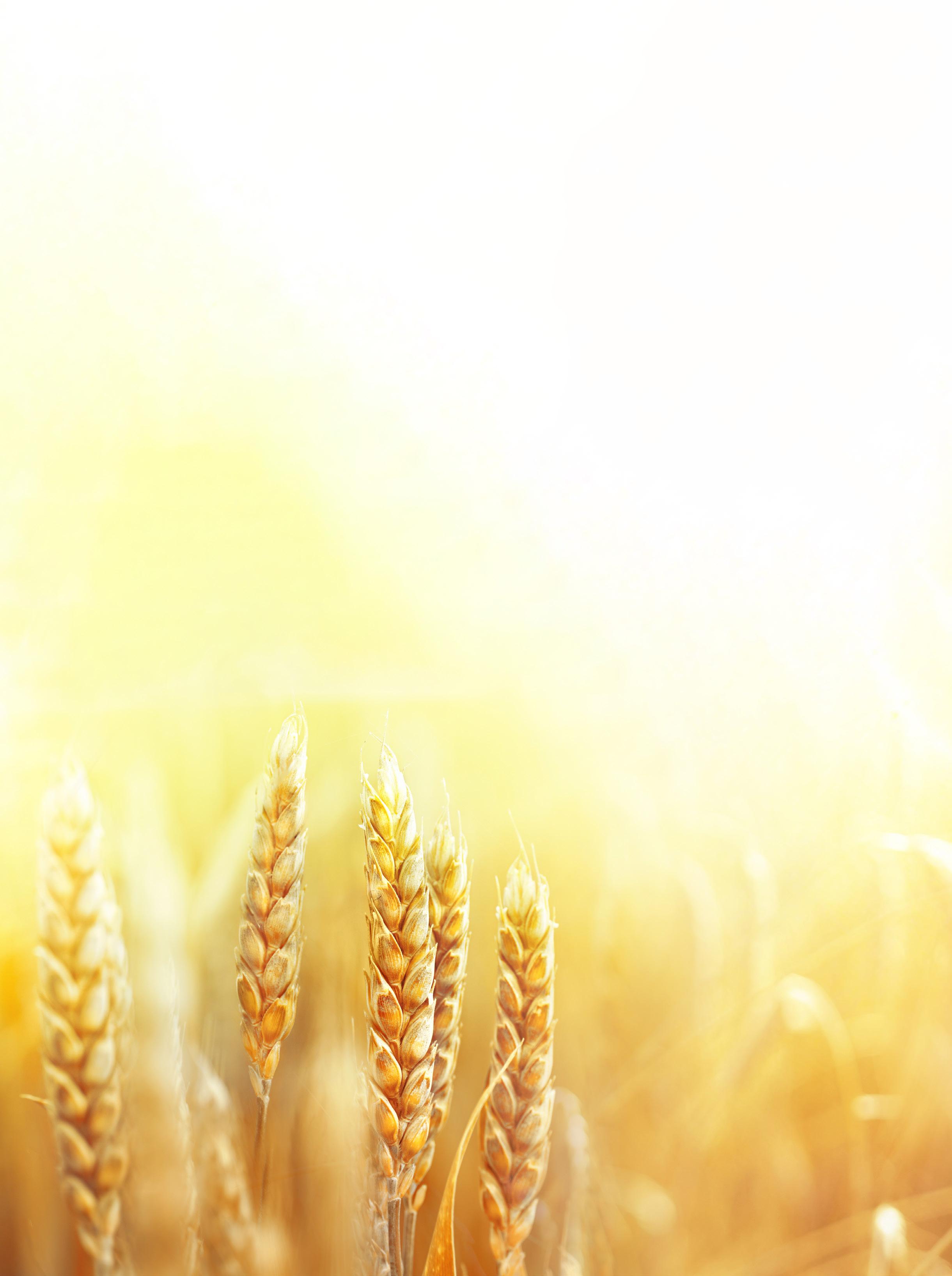
All the villages around Komemiyut mocked the religious farmers for planting those seeds and warned them that they would incur a huge loss. But they went ahead nonetheless. And in that ‘Eighth Year’ there were no rains in the beginning of the winter and all the seeds of all those who had plowed the land during the shmitta and planted immediately at the end of shmitta died in the dry land. But for the Komemiyut farmers, who started plowing only after Sukkos and planted in the first months of the winter, the rain came just on time. Miraculously, the damaged seeds grew into high quality wheat.
“And that,” concluded Rabbi Mendelson, “was a sign that Hashem sends his blessings to those who observe shmitta.”~
www.KosherSpirit.com 7
KOMEMIYUT MOSHAV
BRAISED MAPLE
LAMB SHOULDER CHOPS
MEAT | FREEZES WELL | Y i ELDS 6–8 SER vi NGS
BRAISED MAPLE LAMB SHOULDER CHOPS
The aroma of this dish is out of this world. The flavors in the sauce really enhance the tender lamb, taking it to the next level. It’s a perfect main for a yom tov dinner.
The aroma of this dish is out of this world. The flavors in the sauce really enhance the tender lamb, taking it to the next level. It’s a perfect main for a yom tov dinner.
INGREDIENTS
2–3 lbs lamb shoulder chops or lamb riblets
METHOD
1. Preheat oven to 350 degrees.
INGREDIENTS
kosher salt and black pepper, to taste
3 Tbsp extra-virgin olive oil
2–3 lbs lamb shoulder chops or lamb riblets
1 head garlic, minced
kosher salt and black pepper, to taste
2 cups chicken broth
3 Tbsp extra-virgin olive oil
¾ cup pure maple syrup
METHOD
BRAISED MAPLE LAMB SHOULDER CHOPS
1. Preheat oven to 350 degrees.
½ cup orange juice
1 head garlic, minced
MEAT | FREEZES WELL | Y i ELDS 6–8 SER vi NGS
2. Season ribs with kosher salt and pepper to taste. Heat olive oil in a cast iron skillet over medium-high heat. Sear lamb chops on both sides until nicely browned, about 3 minutes per side. Arrange in a roasting pan in a single layer.
2 cups chicken broth
½ cup dark brown sugar, packed
¾ cup pure maple syrup
The aroma of this dish is out of this world. The flavors in the sauce really enhance the tender lamb, taking it to the next level. It’s a perfect main for a yom tov dinner.
½ cup malt vinegar
peel of 1 orange, julienned
½ cup orange juice
2. Season ribs with kosher salt and pepper to taste. Heat olive oil in a cast iron skillet over medium-high heat. Sear lamb chops on both sides until nicely browned, about 3 minutes per side. Arrange in a roasting pan in a single layer.
3 sprigs rosemary
½ cup dark brown sugar, packed
½ cup malt vinegar
INGREDIENTS
peel of 1 orange, julienned
3. Discard excess oil from skillet and lower heat to medium. Add garlic and sauté until fragrant. Add chicken broth, maple syrup, orange juice, brown sugar, malt vinegar, orange peel, and rosemary. Mix well and bring to boil.
METHOD
2–3 lbs lamb shoulder chops or lamb riblets
3 sprigs rosemary
kosher salt and black pepper, to taste
3 Tbsp extra-virgin olive oil
1 head garlic, minced
2 cups chicken broth
¾ cup pure maple syrup
½ cup orange juice
½ cup dark brown sugar, packed
½ cup malt vinegar
peel of 1 orange, julienned
3 sprigs rosemary
1. Preheat oven to 350 degrees.
4. Pour sauce over the lamb, cover pan tightly, and bake for 2 hours. Uncover, raise heat to 400 degrees, and roast for 15 minutes.
3. Discard excess oil from skillet and lower heat to medium. Add garlic and sauté until fragrant. Add chicken broth, maple syrup, orange juice, brown sugar, malt vinegar, orange peel, and rosemary. Mix well and bring to boil.
2. Season ribs with kosher salt and pepper to taste. Heat olive oil in a cast iron skillet over medium-high heat. Sear lamb chops on both sides until nicely browned, about 3 minutes per side. Arrange in a roasting pan in a single layer.
4. Pour sauce over the lamb, cover pan tightly, and bake for 2 hours. Uncover, raise heat to 400 degrees, and roast for 15 minutes.
Reprinted with permission from The Marblespoon Cookbook by Vera Newman, published by Menucha Publishing.
3. Discard excess oil from skillet and lower heat to medium. Add garlic and sauté until fragrant. Add chicken broth, maple syrup, orange juice, brown sugar, malt vinegar, orange peel, and rosemary. Mix well and bring to boil.
4. Pour sauce over the lamb, cover pan tightly, and bake for 2 hours. Uncover, raise heat to 400 degrees, and roast for 15 minutes.
THE MARBLESPOON COOKBOOK MEAT 260
8 www.OK.org THE MARBLESPOON COOKBOOK
Y i ELDS
SER vi NGS
MEAT | FREEZES WELL |
6–8
THE MARBLESPOON COOKBOOK
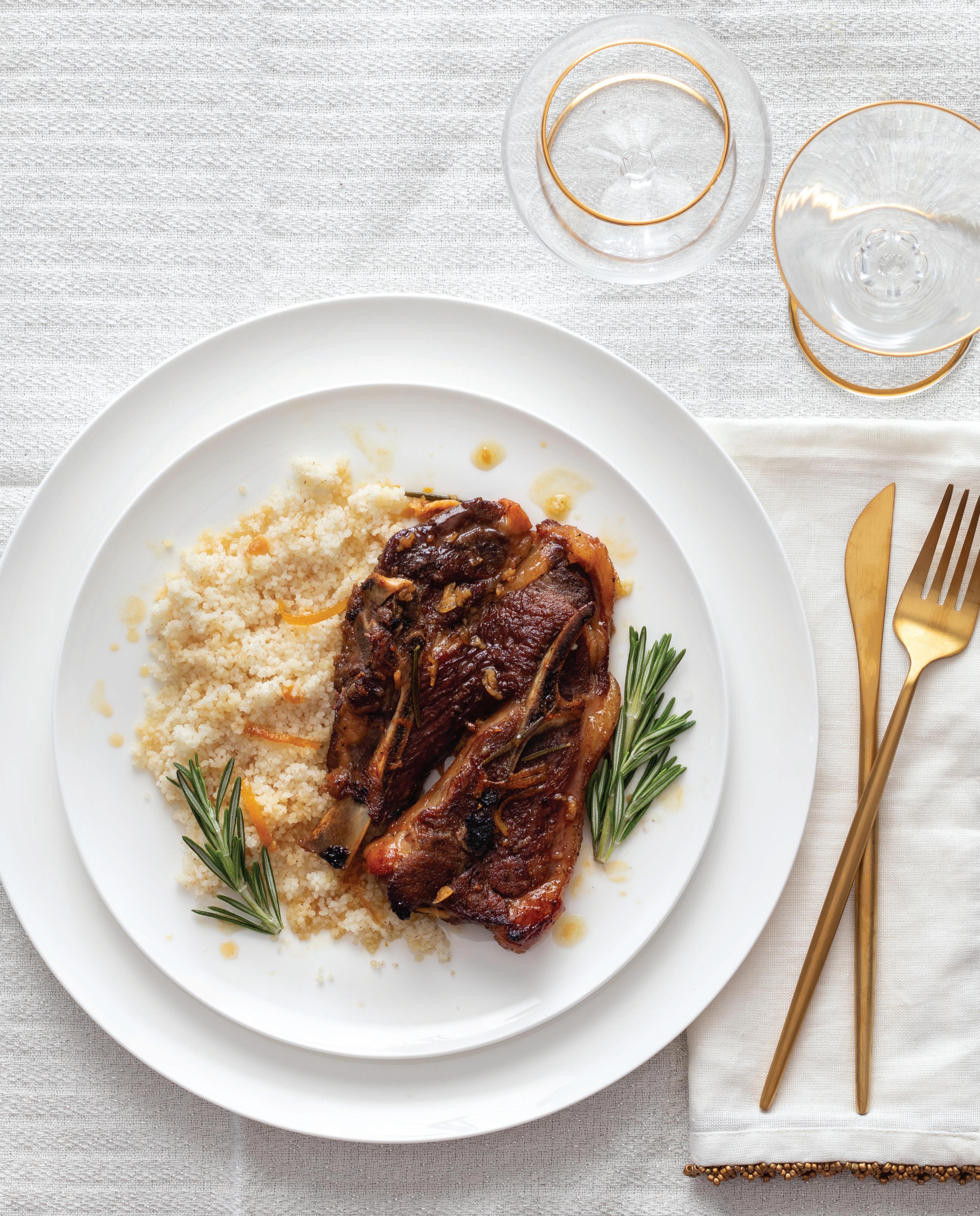
www.KosherSpirit.com 9
Why Does Bamboo Schach Need a Hechsher?
By Rabbi Don Yoel Levy OB"M
ONE OF THE LAST ITEMS MY FATHER, RABBI BEREL LEVY, OB”M, GAVE A HECHSHER ON WAS BAMBOO SCHACH. WHY IS A HECHSHER NEEDED ON SCHACH?
In order for schach to be considered kosher, it must follow certain guidelines. The schach must be made from something that grows; it must be cut off from the ground and must not be considered a vessel of receiving. It must also be used to provide shade.
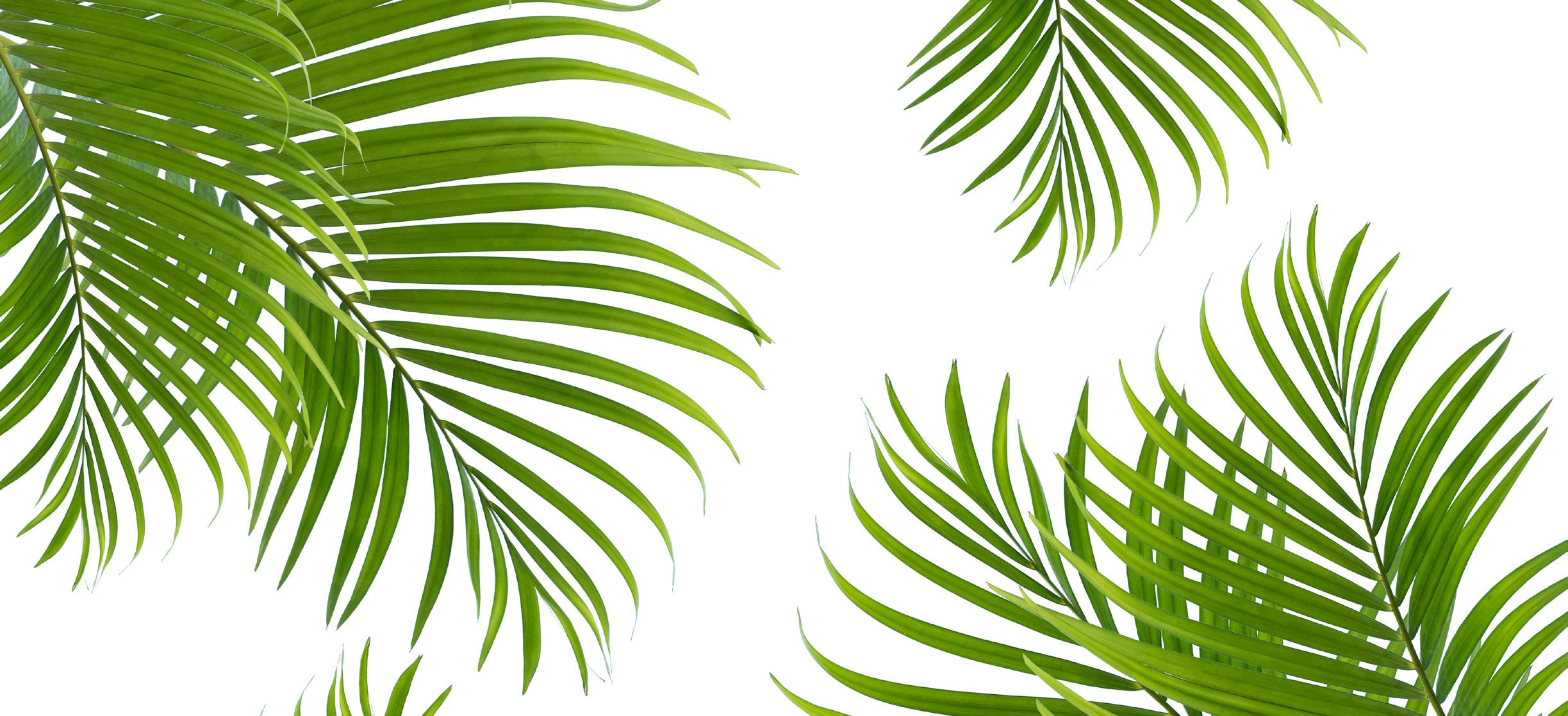

The schach certified by the ~ is made from bamboo mats. In the Mishna and, subsequently, in the Shulchan Oruch, it states that if the mats are made to sit on (as in countries where they sit on the floor, or in countries where they sleep on mats) they would not be considered kosher for schach. In addition, if the material is used for roofing year round, it is questionable whether it would be kosher for schach. The mats we certify are made in China. Today, in China, mats are usually made for shades and not for sitting on. They are also used as small placemats for eating, but they are not suitable at all

for schach as they are not the appropriate size. The Talmud tells us that shades are considered a vessel that is mekabel tumah (subject to ritual impurity), because sometimes people wrap themselves in shades to protect themselves from the sun. Obviously this a shade made from material that can wrap around a person; a hard wooden shade would not necessarily fit into this category.
Even though it is possible that these mats would be kosher even if they were made for shades, we have instituted some changes to ensure the highest level of kashrus. First, we require the company to make mats with thicker pieces of bamboo wood every foot or so, which makes sitting on them uncomfortable and also impractical to use as a window shade.
In addition, while visiting the factory, I had the owner write up a sign, in Chinese, (to be hung up in the factory) stating that the mats being produced now are made for shade and religious purposes. To ensure that the sign stated exactly what I requested, I took a copy of the sign and showed it to various Chinese-speaking people, from hotel personnel to airline passengers on the plane ride back from the facility, and asked them to please
Originally printed in 2008 10 www.OK.org
translate the sign. It was indeed written as I requested.
In Kenya, these mats are made for use as roofing year round, which would be a problem to use as schach
The bamboo mats are usually woven or held together by string. The string could also present a kashrus problem. The string used to tie the bamboo mat should also be made from something that is kosher for schach, so we require 100% cotton string. This is because the Shulchan Oruch tells us that a davar hamamid (literally “thing that makes stands,” i.e. a key element) that is mekabel tumah is not kosher.
What does this mean? When laying the schach on the sukkah, you usually lay it on sticks. It is not preferable to lay the schach on metal bars, however, b’di’eved (after the fact) it is acceptable. This means that the supports for the schach should only be made from something that is kosher for schach l’chatchila (in the first place). Similarly, if you were to use something non-kosher to hold together the schach, it would also present a problem. Synthetic string is not kosher for schach , hence cotton, which grows from the ground, is preferable.
How do we make sure the company is using cotton string when synthetic string is cheaper and stronger? During production, we send a mashgiach to the factory to make sure that the sign stating the mats are produced for religious purposes is displayed and to check that the string is 100% cotton. The mashgiach checks the string by burning it. If it is synthetic, the string melts and drips, but if it is cotton, then it will burn and have a pungent odor like burning hair. In addition, when the mats arrive in the United States, we take samples of the string to laboratories, like the Shatnez Laboratory, to
make sure that it is 100% cotton. One year we found that the company had sent part of the shipment of mats made with string that was not 100% cotton, so we could not, and did not, certify that lot. In addition, the ~ is the only kosher supervision agency that sends a mashgiach to oversee production every time schach is produced.
Some people question the validity of using string, because there is an opinion that rope is not acceptable for schach , because it may be mekabel tumah. In the Shulchan Oruch HaRav, it is written that a rope is not mekabel tumah . Others, however, are of the opinion that rope can be mekabel tumah, because poor girls can use it as jewelry (i.e. if the rope is braided). Even among those poskim that hold that rope is mekabel tumah , they do not hold that string is in the same category as rope. Therefore, this is not pertinent to our situation because the schach is tied with a thin string and is not held together by rope.1
If for some reason one is still not comfortable with using string, Rabbi Moshe Shaul Klein, shlit”a, from the Bais Din of Rav Wosner, shlit”a, suggests putting X-shaped support sticks underneath the mats to ensure that there is absolutely no question since the mats would be functional even if they were not held together by string.
The bamboo mats certified by the ~ have enabled thousands of Jews to have easy-to-use, kosher schach for their sukkahs. Rabbonim and Jews all over the world use the bamboo mats to cover their sukkahs, in remembrance of the way that Hashem covered the Jews with the Clouds of Glory as they wandered through the desert.
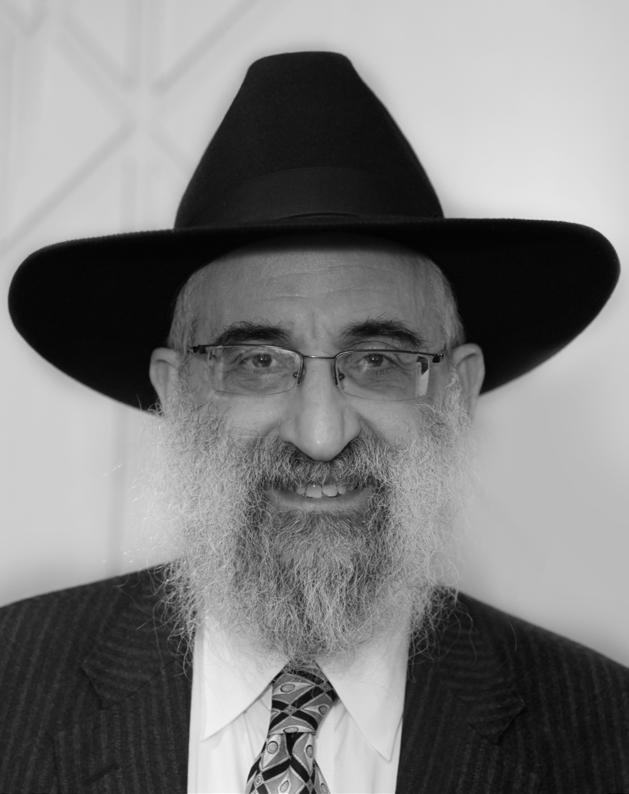
~ 1
Volume 49,
63-67,
is
at
REMEMBERING RABBI DON YOEL LEVY OB"M ה”ע יוויל לאוי ןד ברה פ״שת׳ה ןסינ ב״כ ונורכז הכרבל Kashrus Administrator of ~ Kosher Certification 1987-2020 www.KosherSpirit.com 11
See Kovetz Ohr Yisroel,
pages
where this
discussed
length.
By Rabbi Sholom Kesselman, ~ West Coast Food Service Coordinator
As any rabbi working in kashrus will easily attest, one of the most frequently asked questions we get is, “Is this hechsher acceptable?” Or, “Can I eat this product?” “Can I eat in this restaurant?” “Do we rely on this hechsher?”
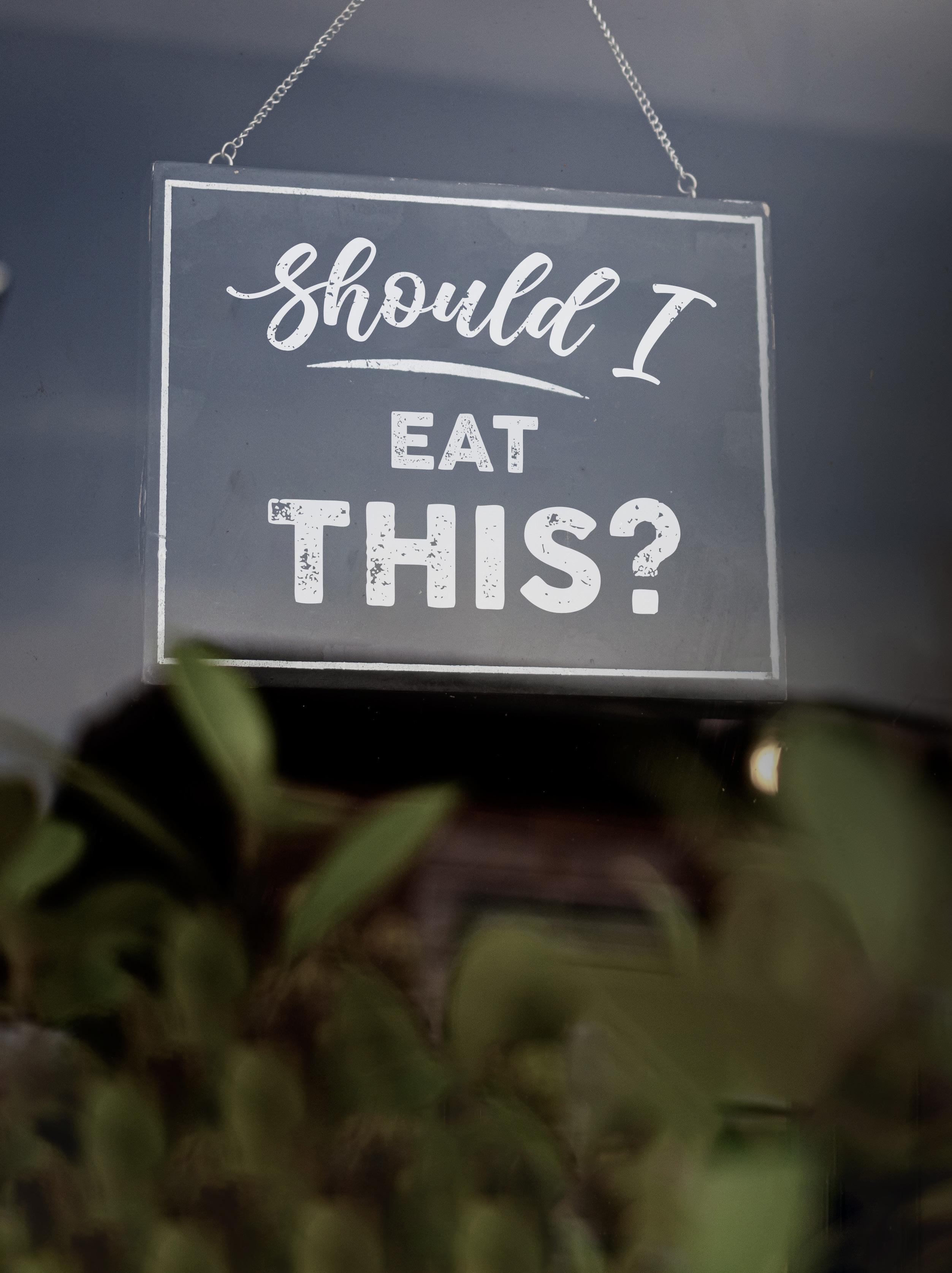
Given the hundreds of different hechsherim out there, it is no easy task to decide on which ones to rely. While there are published lists available online informing consumers about reliable hechsherim, relying on a list can be an oversimplification of an otherwise complex subject. While it is convenient to arrange the scores of hechsherim into two neat columns, acceptable and not acceptable, such an approach does not always work in reality. Kashrus is far too nu-
anced and layered for such a simple approach to do it justice.
I was recently at the bris of a friend’s newborn son. The bris was catered by a popular local caterer who had an “acceptable” hechsher. I noticed many people simply eating everything without asking any questions. I approached a number of them and asked whether they were aware that the “acceptable” hechsher certifying this caterer did not require canned tuna to have a mashgiach temidi. Needless to say, these
people were genuinely surprised and promptly discontinued the consumption of their tuna bagels.
Similarly, I was recently talking to someone and he was telling me about a certain restaurant he ate in and how good it was. He was, again, utterly shocked when I told him that to my knowledge that restaurant, with its “acceptable” hechsher uses baked goods that are not Pas Yisroel.
These mistakes happen because we have adopted an approach to kashrus that is far too simple. We either con-
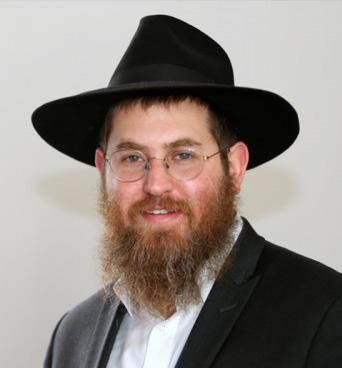
12 www.OK.org
sider it acceptable, in which case we eat everything without any further thought or we consider it unacceptable in which case we don’t eat it at all.
To properly understand what our approach to kashrus should be, let us first understand how a typical kashrus agency works and what would make one either acceptable or unacceptable.
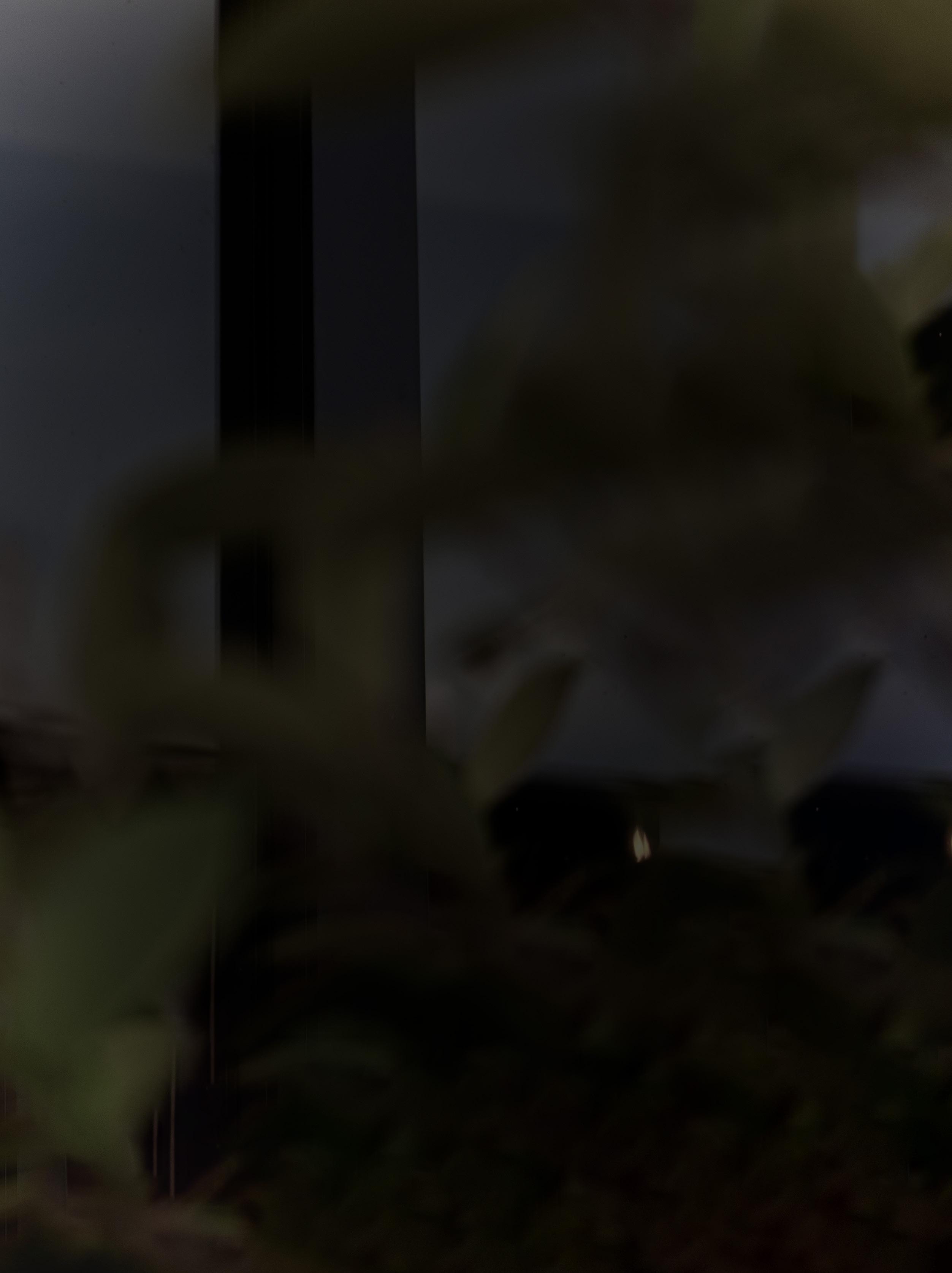
There are 3 main components to a hechsher:
• The Rav Hamachshir, or in a larger agency a Vaad HaKashrus.
• The standards the agency claims to uphold.
• The ground game and how they run their day to day operations.
The Rav Hamachshir/Vaad HaKashrus is the rabbi (or team of rabbis), along with a Posek (often from outside the agency), who are responsible for all of the Halachic decisions and for setting the policies and standards of the kashrus agency. These rabbis must be known to be experts in Halacha and Yarei Shomayim and have a reputation for following Shulchan Oruch without compromise or shortcuts. If a hechsher does not have such a rabbi/vaad standing at its head, then obviously it is not going to be worth much and should be treated as wholly unacceptable.
Every kashrus agency has standards. Examples of standards are: Cholov Yisroel (including whether they kasher between Cholov Yisroel and Cholov Stam), Pas Yisroel, mashgiach temidi, processes used for checking produce for insects, Glatt/Beis Yosef, and kashering requirements, techniques and methods. Differ-
ent hechsherim have different policies and standards when it comes to these areas. These are standards that they should be transparent and upfront about. The consumer then, knowing exactly what standard the hechsher is claiming to uphold, can decide whether or not they wish to consume the food.
It should be mentioned that having different standards does not make a hechsher unreliable. For example, if one eats only Cholov Yisroel, a hechsher that also certifies Cholov Stam is not “unreliable”; the Cholov Stam product just does not meet your family’s kashrus standards.
The ground game. For a kashrus agency to be reliable it’s not enough to have the most prominent Posek and to claim the high standards. There needs to be Rabbinic Coordinators overseeing each company and mashgiach, and a solid plan and system for implementation and follow up. This includes hiring and training competent mashgichim, making frequent visits and inspections, manpower, technology to monitor and track all the different ingredients and products they certify, and they must address problems that occur in a timely and thorough manner. If any of these are lacking, the hechsher cannot be deemed acceptable.
One of our restaurants asked to use a certain item. I did some research on the product and realized right away that while the rabbi certifying the item was knowledgeable in Halacha, the ground game was not properly implemented. He thought someone was visiting the plant where the item was made and that person thought it was the rabbi himself who did the inspections! Of course we could not accept the product.
www.KosherSpirit.com 13
We might decide that for one product we will accept a certain hechsher and for another we won’t. This, I believe, is the more correct and honest approach to kashrus.
So how do I make a decision?
An acceptable hechsher must have a reliable Rav HaMachshir/Vaad HaKashrus and a solid ground game. These two areas are black and white and can be pretty easily researched. This is the primary criteria on which the lists of acceptable vs. unacceptable hechsherim are based.
The second point, the standards, is a much more complex and nuanced one and, unfortunately, this information is not always so readily known and available.
This is the part where we, the consumer, must assume responsibility. When deciding whether we will purchase an item in the store, or eat at a restaurant or event, we need to ask ourselves whether we truly know the standards upheld by this hechsher and whether those standards are aligned with our own. When we blindly eat anything because it has a “good hechsher” we are not being true to ourselves.
We might decide that for one product we will accept a certain hechsher and for another we won’t. This, I believe, is the more correct and honest approach to kashrus. It cannot be simply that we do or don’t accept a hechsher, rather it should be product by product, item by item.
When it comes to dining out, either at a restaurant or a simcha, there is no reason to accept a lower standard than what we keep in our own home. We all have standards to which we adhere in our own kitchens, usually a combination of what we learned from our parents, our community minhagim, and what we’ve heard from our personal Rav.
The first step is to know and understand your personal kashrus standards. The second step is to educate yourself and find out before you eat in a restaurant whether or not the kashrus there meets your standards. You can ask the mashgiach working there or call the agency’s office; either way, we need to make it our responsibility to investigate and educate ourselves about the nuances of the kashrus before eating. ~
How do I know what questions to ask?
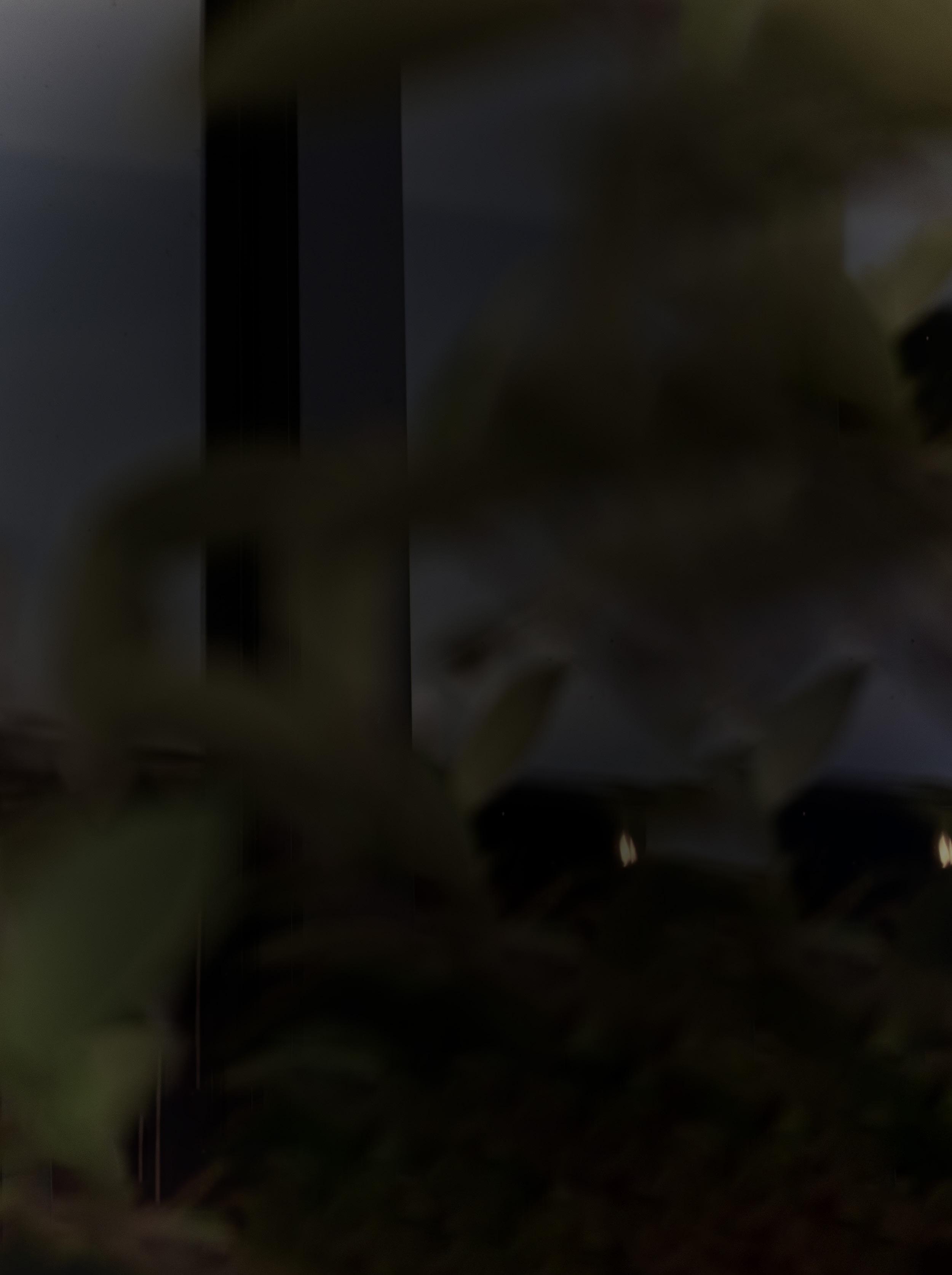
What follows is a list of questions you might want to ask when deciding whether or not to eat. This is by no means a complete list but some important general points to get us thinking.
MEAT: Is it Glatt? Is it Beis Yosef? Is it Chassidishe Shechita? Do they kasher liver or only buy pre-kashered? Split chickens?
FISH: Do they source their fish from companies that have Hashgacha Temidis? Does the fish come in with the skin still on? If the fish comes in already filleted, is it thoroughly rinsed before being used? Do they require hashgacha temidis on canned tuna?
GENERAL QUESTIONS:
• Is there a mashgiach temidi or only unannounced inspections?
• What kind of training did the mashgiach get?
• Does anyone other than the mashgiach have the keys? Who?
• What is the standard and procedure for hafrashas challah?
• What is the standard and procedure for checking vegetables?
• What is their standard for kashering keilim? At what temperature?
• What is their standard for tevilas keilim?
• Are they careful about linas layla (not leaving raw cut onions and garlic or cracked raw eggs overnight)?
• Are they careful about chodosh?
• Are they strict about Bishul Yisroel Beis Yosef?
• Are all baked goods Pas Yisroel?
• Is all the dairy Cholov Yisroel?
• How is Bishul Yisroel being ensured?
• What secondary hechsherim do they rely on?
• What is their policy for alcoholic beverages?
14 www.OK.org
SUPERMARKETS AND SYMBOLS
By Fraida Simon, ~ Kosher Trademark and Licensing Department
It’s not unusual for shoppers to pick up an item, turn it around a couple times, and put it right back on the shelf. Whether checking ingredients for allergen or dietary purposes, looking for product statements regarding origin, or simply snapping a photo to share a new find, looking over food packaging is a common sight.
For the kosher consumer, there is often a balance between thorough investigation due to the necessity of ensuring that products have a recognized and trusted kosher certification symbol, and the remembered knowledge of products they have regularly purchased that have always been kosher certified, so one would imagine there is no need to check again.
However, due to the constantly changing nature of not only manufacturing, but sourcing and availability of kosher products and ingredients, it is always advised to check each and every product for its kosher certified status.
It’s not easy to keep up with the constant flow of information, and it’s certainly not reasonable to have every brand change, every ingredient swap, and every kosher advisory with endless lot numbers memorized.
In 2015, due to formula changes, a popular flavor of a well-known beverage brand was removed from the list of ~ certified products, and the ~ symbol consequently removed from the product label. An advisory was sent out to notify the public of this change; yet we still get inquiries from consumers who have purchased the non-certified product in error.
It’s tempting to rely on memory and familiarity with a well-loved product or brand and assume that
the product is certified as always. But as we can see, changes to the very black and white certified/uncertified status of a product can happen at any time, and the label you’re looking at is your personal indicator of that change.
Which brings us back to the shopper in the store, picking up that bottled drink/bag of chips/can of beans. Our aim in having a kosher certification agency place their symbol on the product label (or take it off again!) is for the kosher consumer to find and trust that information, and then make purchasing decisions based on it.
So, remember; take the time to check every product you purchase for a valid kosher symbol, whether the item is brand new to you or a household staple. It may just change your list. ~
www.KosherSpirit.com 15
Te Mitzvah of B’
HAFRASHAS CHALLAH
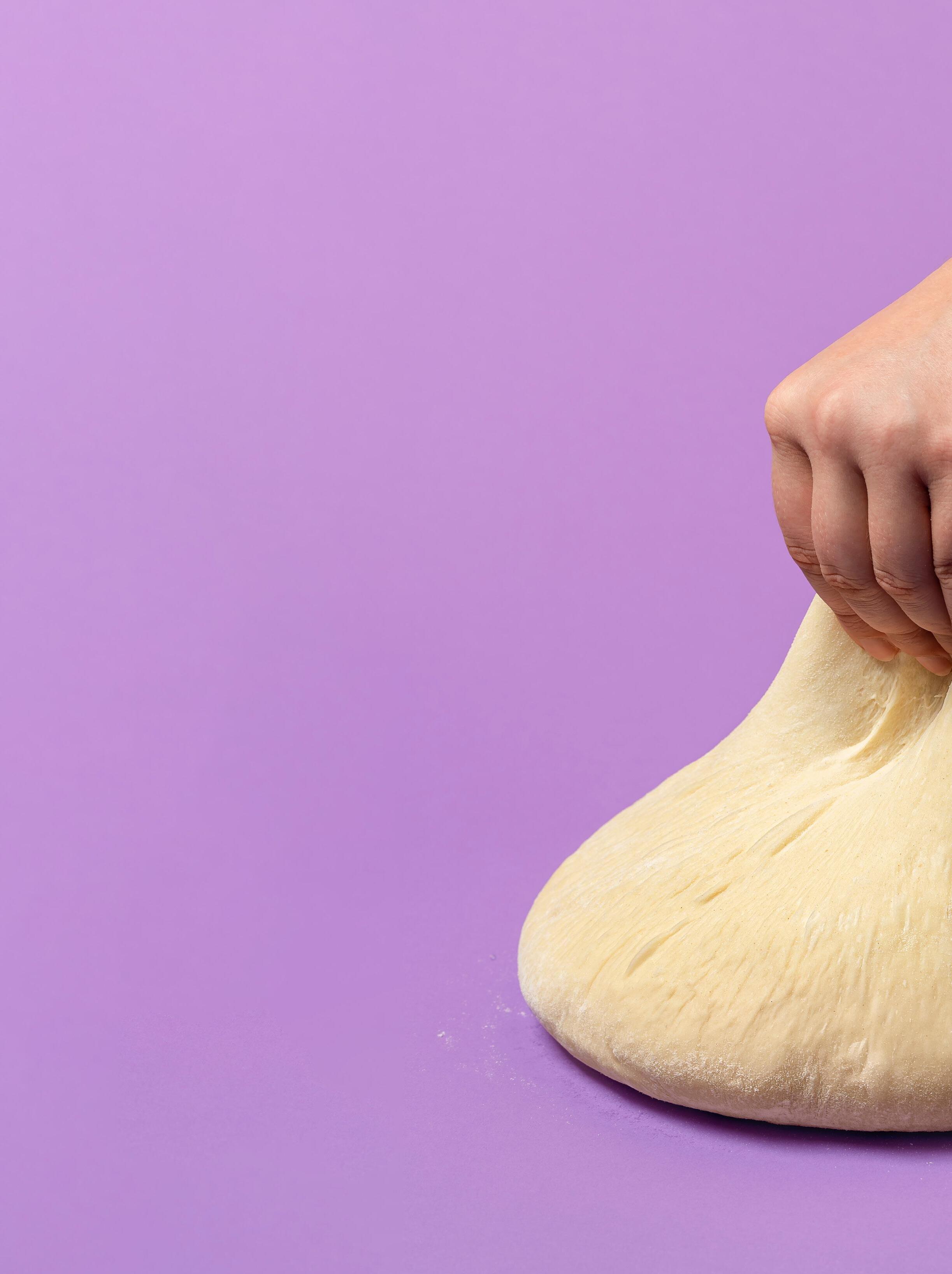 By: Rabbi Sholom Ber Lepkivker, ~ Rabbinic Coordinator
By: Rabbi Sholom Ber Lepkivker, ~ Rabbinic Coordinator
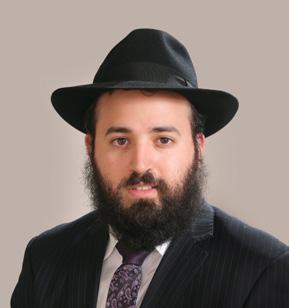
nei Yisroel were given the mitzvah of hafrashas challah as an atonement for the sins of the meraglim (spies) who were sent in to gather information about Eretz Yisroel in Parshas Shlach.
Hashem spoke to Moshe saying: Speak to the children of Israel and you shall say to them.
When you arrive in the Land to which I am bringing you, and you eat from the bread of the Land, you shall set aside a gift for Hashem. The first portion of your dough, you shall separate a loaf for a gift; as in the case of the gift of the threshing floor, so shall you separate it. From the first portion of your dough you shall give a gift to Hashem in [all] your generations.1
1 Chumash Bamidbar 15:17-21.
16 www.OK.org
The mitzvah of hafrashas challah during the time of the Mishkan and Bais HaMikdash was to separate and give a portion of dough to a Kohen. The portion was called “challah”. This obligation was specific to Eretz Yisroel when all of the Jews lived there. Today, the mitzvah is d’rabbanan, and outside of Eretz Yisroel we observe the mitzvah so that people will not forget the laws of challah.
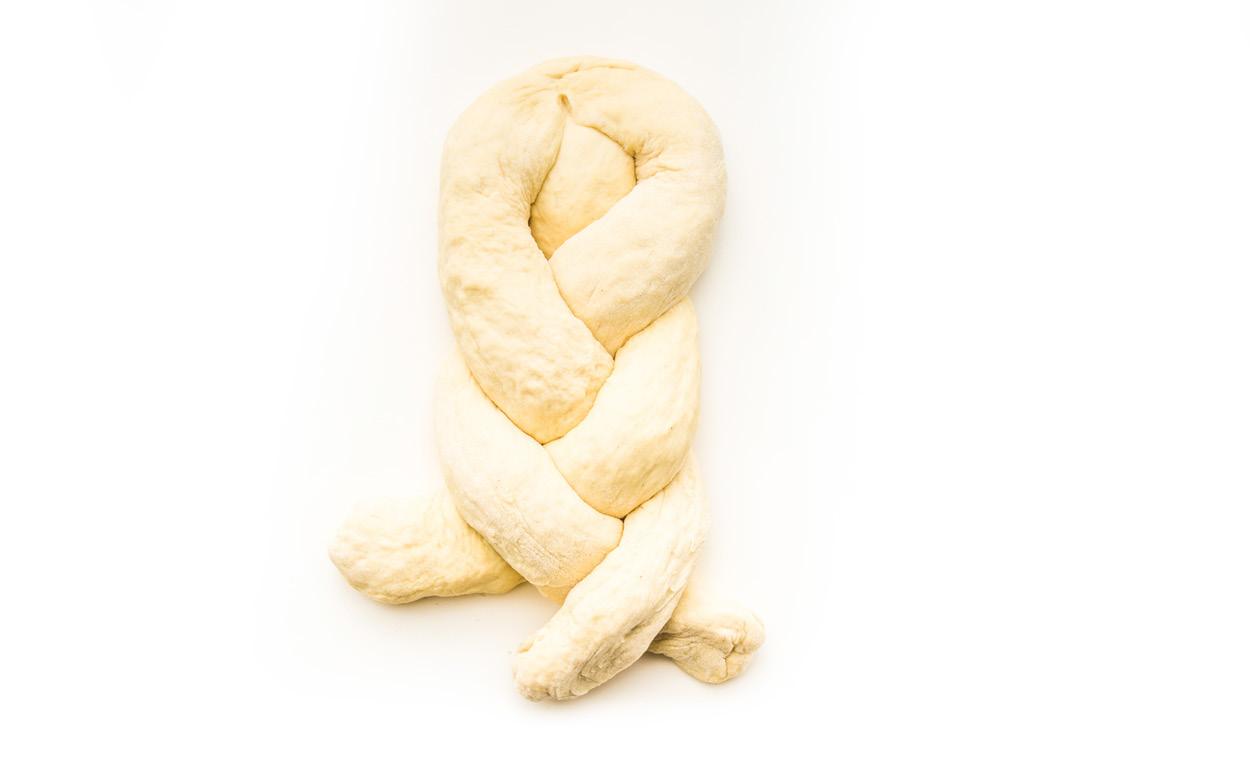
While there isn’t an exact measurement of the amount of dough which needs to be separated, Chazal say that it should be at least 1/24th of the dough for a private person and 1/48th of the dough for a baker 2 when challah is separated in Eretz Yisroel. These days, the custom is to take a k’zayis3 of dough, even in Eretz Yisroel, to minimize the chance of ritual impurity.
The original custom outside of Eretz Yisroel was to separate two portions of challah from every batch of dough – one to burn because of the status of ritual impurity of the Kohanim (without the above size requirement), and one for a Kohen to eat (even an impure one) that was at least 1/48th of the dough to remember the laws of challah. However, if the Kohen was ritually pure (immersed in the mikvah, or was a child) there was no need for a second portion, because it could be eaten in a state of ritual purity. According to the Rema, the custom is to take only one4 portion and burn it, even if there is a Kohen available. This is the prevailing custom today.
OWNERSHIP
Hafrashas challah is a mitzvah that only applies when the dough is owned by a Jew at the time of kneading. If a Jew receives dough from a Gentile as gift, and it has already been kneaded, hafrashas challah is not necessary. When a Jew has a Gentile partner, if the percentage that belongs to the Jew is large enough to require hafrashas challah (see below measurements), then challah must be separated. If the dough was hefker (ownerless), or was made for animal feed, there is no obligation to separate challah.
In order to separate challah, one needs to own the dough (alone or as a partner), or receive permission from the owner to separate challah.
If the dough is going to spoil before the owner returns to separate the challah, some Poskim (Halachic authorities) allow one to separate the challah without permission. On Erev Shabbos, when women usually want to perform the mitzvah themselves5, there are Poskim that do not allow someone to separate challah from dough that will spoil unless they have explicit permission to do so.
In the case of a domestic employee in the household of the owner of the dough, there is a debate between the Poskim whether it is permissible for the employee to separate challah without explicit permission even though the owner sometimes permits them to do so.

3 A
is
which is 1/3 to ½ the volume of an egg. Rav Avrohom Chaim Na’eh’s opinion is that a k’zayis is 27 cc. This is a volume measurement and the conversion to ounces or grams depends on the item being measured. The majority follow this opinion.
4 Even in Israel the challah is not eaten.
2 There are two reasons: the baker has more expenses and the baker gives a lot more overall to the Kohen.
k’zayis
the volume of an olive,
www.KosherSpirit.com 17
5 As it’s one of the special commandments that have a special connection with women.
TYPES OF DOUGH
To fulfill the mitzvah of hafrashas challah, the dough must be made out of one (or more) of the Five Grains (ןגד ינימ תשמח)6
1. Liquid Batter – Challah is only taken if the batter will be baked.
• Outside of Eretz Yisroel, if the batter is fried, challah is not separated. In Eretz Yisroel challah should be separated without a brocha.
• If any of the batter is baked, the entire batch has the obligation of hafrashas challah.
• Sun drying dough is not considered baking.
2. Thick Dough/Batter - If the dough is originally made as a thick (like a solid consistency) dough, one is required to separate challah. If the dough was intended to be deep fried, one does not need to separate challah. However, there are opinions that disagree about the status of thick fried dough; therefore, it is best to separate challah without a blessing or par-bake the dough.
3. Crêpes – Crêpes and similar products that are not baked, and are very thin, do not require hafrashas challah. If the batter is poured into a pan with a molded shape (like waffles or pancakes), there is an obligation to separate challah if it contains the minimum amount of required flour (see below).
4. Boiling Water - If flour was kneaded with boiling water and will be baked later, hafrashas challah is required.
5. Dough Made Entirely With Juice – Interestingly, one should not make dough using juice as the only liquid because juice leaves the dough ritually pure7. Ritually pure dough cannot be burned (which is the prevailing custom), and must be given to a Kohen. After the fact, if the dough was made exclusively with juice, challah must be separated.8 Today, the actual flour is treated with water during the manufacturing process, which makes the dough vulnerable to ritual impurity, so juice can be used as the sole liquid.
HOW MUCH DOUGH SHOULD I MAKE?
One is required to separate challah from dough that contains at least 43.2 beitzim (volume of an egg) of a flour made from one or more of the Five Grains. Another measurement given is 520 Dirham9. This measurement applies to the flour alone before any other ingredients are added. There are various opinions about how to calculate the minimum volume using modern measuring tools.
• Rav Avraham Chaim Na’eh: 1 Dirham = 3.205 grams; therefore 520 Dirham = 1.6 kg. One is obligated to separate challah without a blessing from 1.2 kg (2.65 lbs).10
• Chazon Ish: 43.2 beitzim = 2.3 kg (5.07 lbs)11
• The Tzemach Tzedek12 writes that there is an obligation to separate challah beginning at 2 lb. 7oz.13, which is equivalent to 3 Russian “funt” (an obsolete Russian unit of weight).
One isn’t allowed to make the dough intentionally small to avoid separating challah,14 but if the batch of dough is too small to require hafrashas challah, sometimes they can be combined with other batches so that challah can be separated.
1. If the dough is sticky, batches can be combined (as long as they are touching each other) to reach the minimum requirement for hafrashas challah.
2. Even if the dough is not sticky, batches can be combined in one vessel as long as the walls of the vessel reach higher than the dough, or the dough is covered with a pot lid or cloth.
3. If the batches of dough do not belong to the same person, they cannot be combined unless the owners do not care if their dough gets mixed together.
4. If the batches of dough are of a different quality or taste, or made from different types of grains, they cannot be combined.
9
10
11 The שיא ןוזח holds like the ח”לצ which is of the opinion that the eggs at the time of ל”זח were twice as large.
12 גכר ס”וס ד”וי ת”וש
13 This is also the opinion of ,)ג”צק ’יס ו”ירהמ ת”וש( לייו בקעי ’ר the א”מר )’ג ק”ס םש( ך”ש ,)דכש ’יס ד”וי מ”ד(
14 If
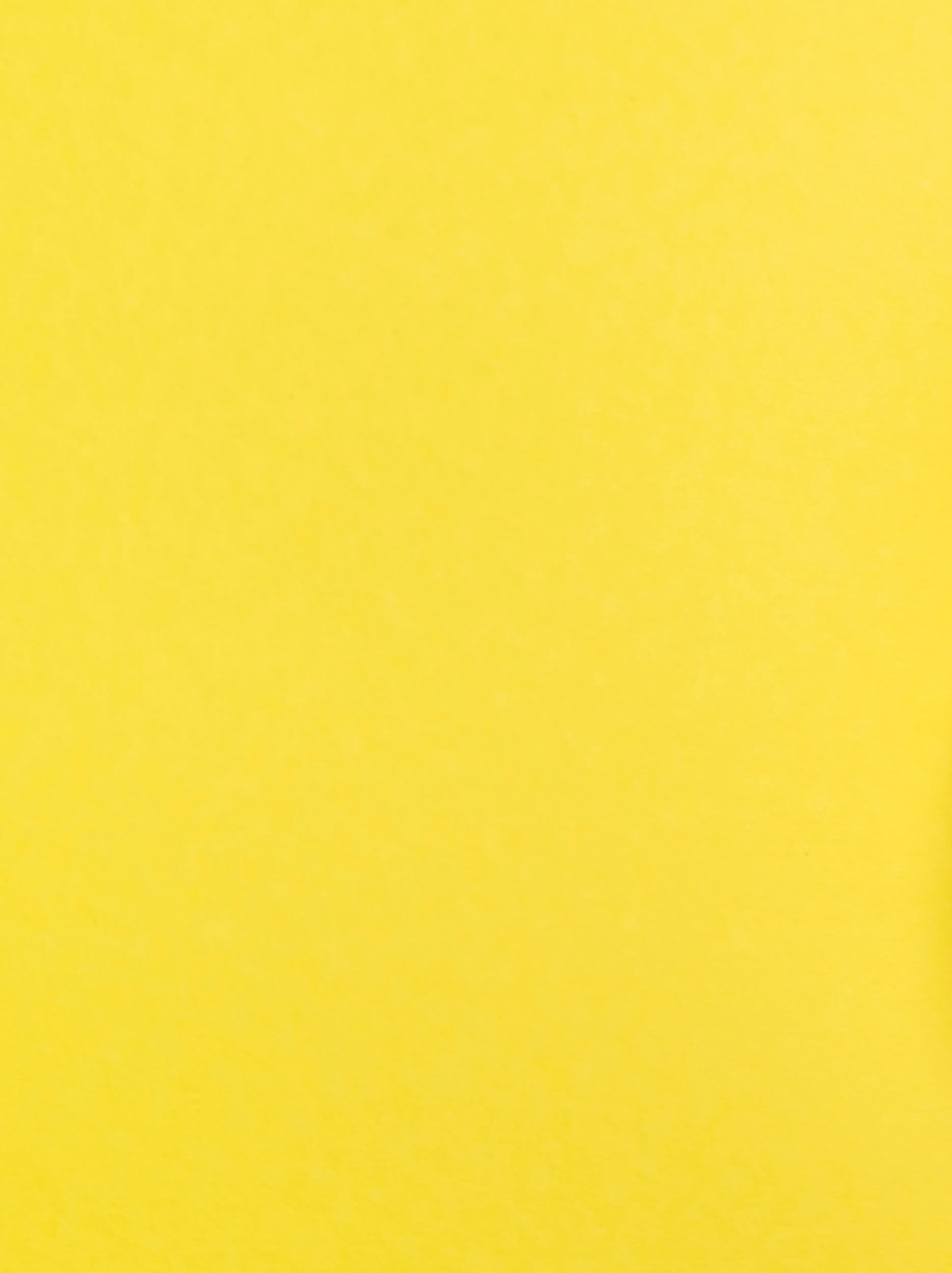
18 www.OK.org
6 Wheat, barley, oat, rye, spelt.
7 In order to become impure, the flour needs to come in contact with specific liquids; juices are not included in that group. 8 In this case, it should be given to a young Kohen to be consumed.
Originates from the Greek coin known as a drachma. It was used as a unit of weight across North Africa, the Middle East and Persia.
As קחודב this amount would be possible to achieve the guidelines of the Mishna.
there are other reasons for making the dough smaller (which are mentioned in Halacha) it is permitted.
AT WHAT POINT IN THE PROCESS IS CHALLAH SEPARATED?
Dough only requires hafrashas challah after the water is added and it is time to knead the dough. It is best to wait until the entire batch is properly mixed before separating challah. If challah was separated before the dough was completely mixed, one must make sure that any dough that remains unmixed is less than the minimum required for hafrashas challah.
If one forgot to separate challah from the dough, it can be separated after baking. In Eretz Yisroel challah must be separated before any of the bread is consumed, but outside of Eretz Yisroel one can still separate challah even after the bread has been eaten, as long as there is some left over.
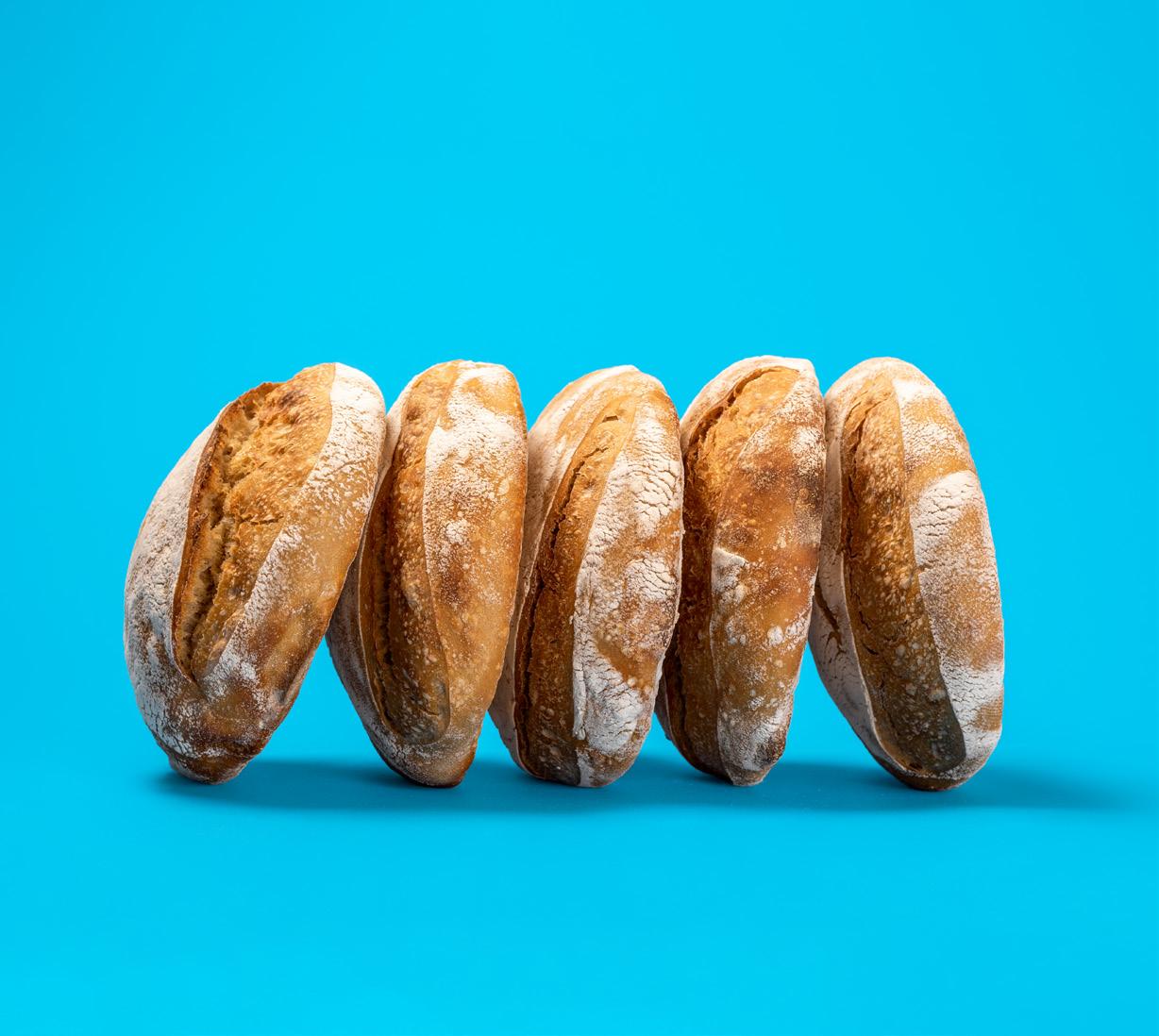
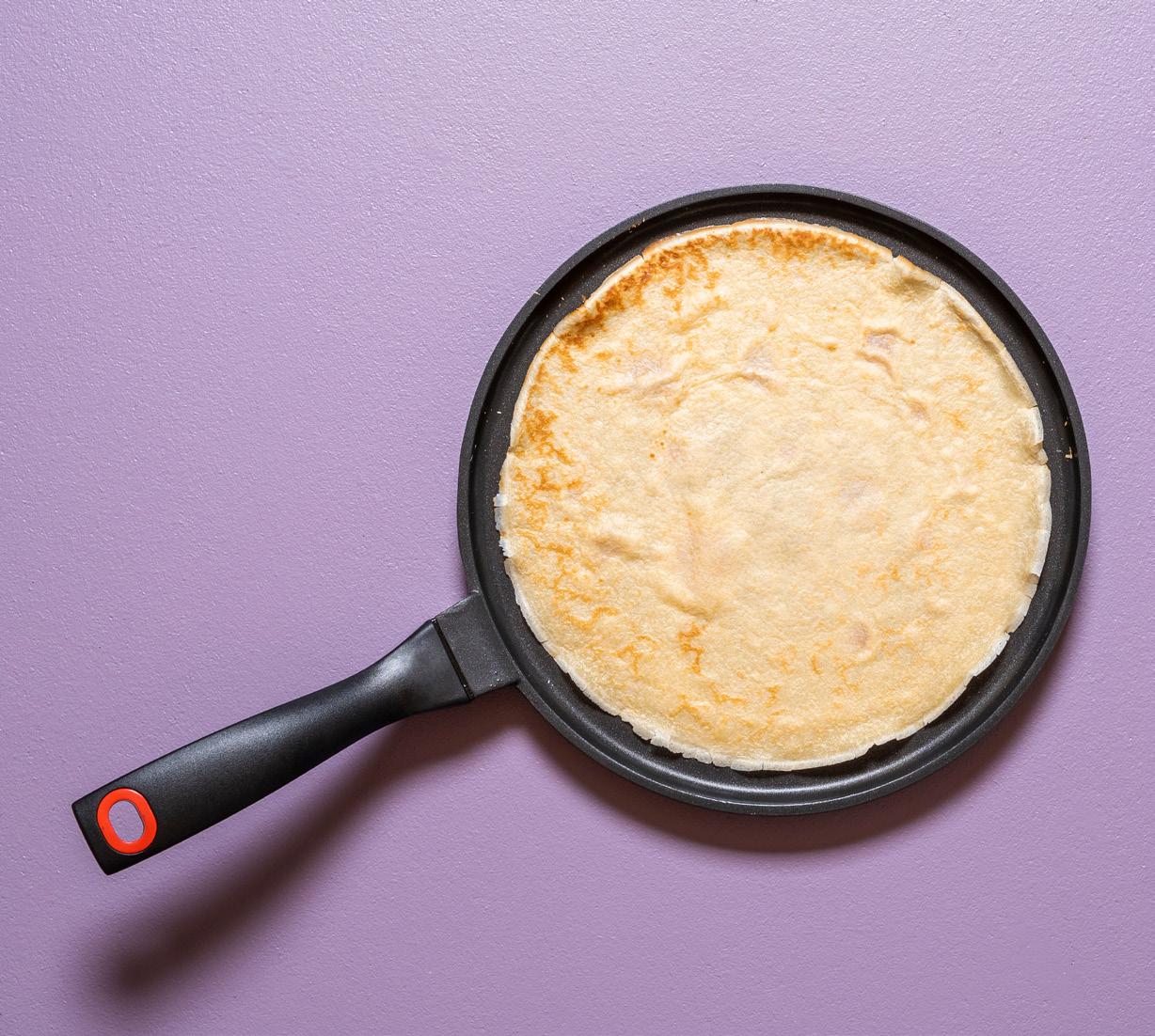
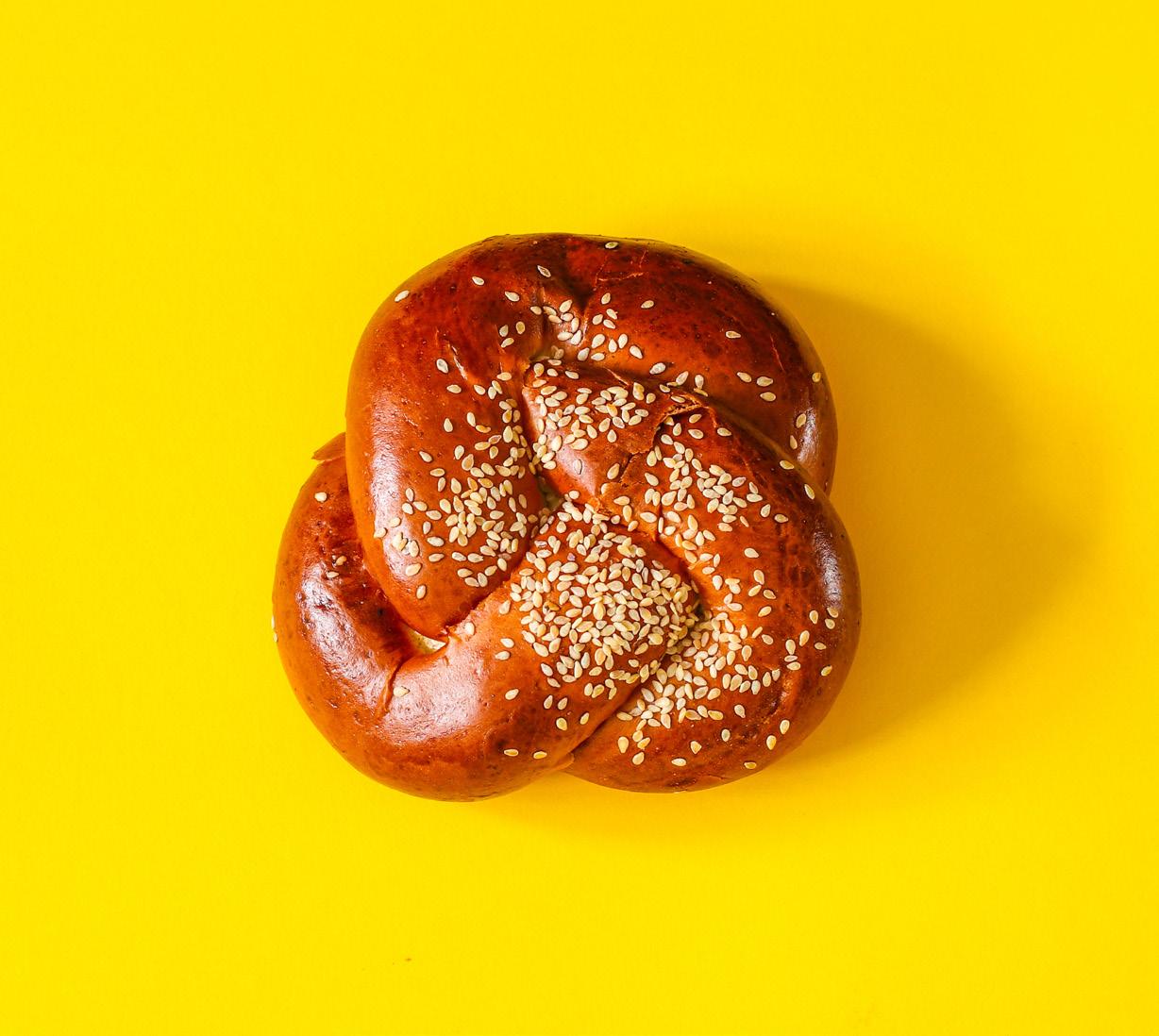
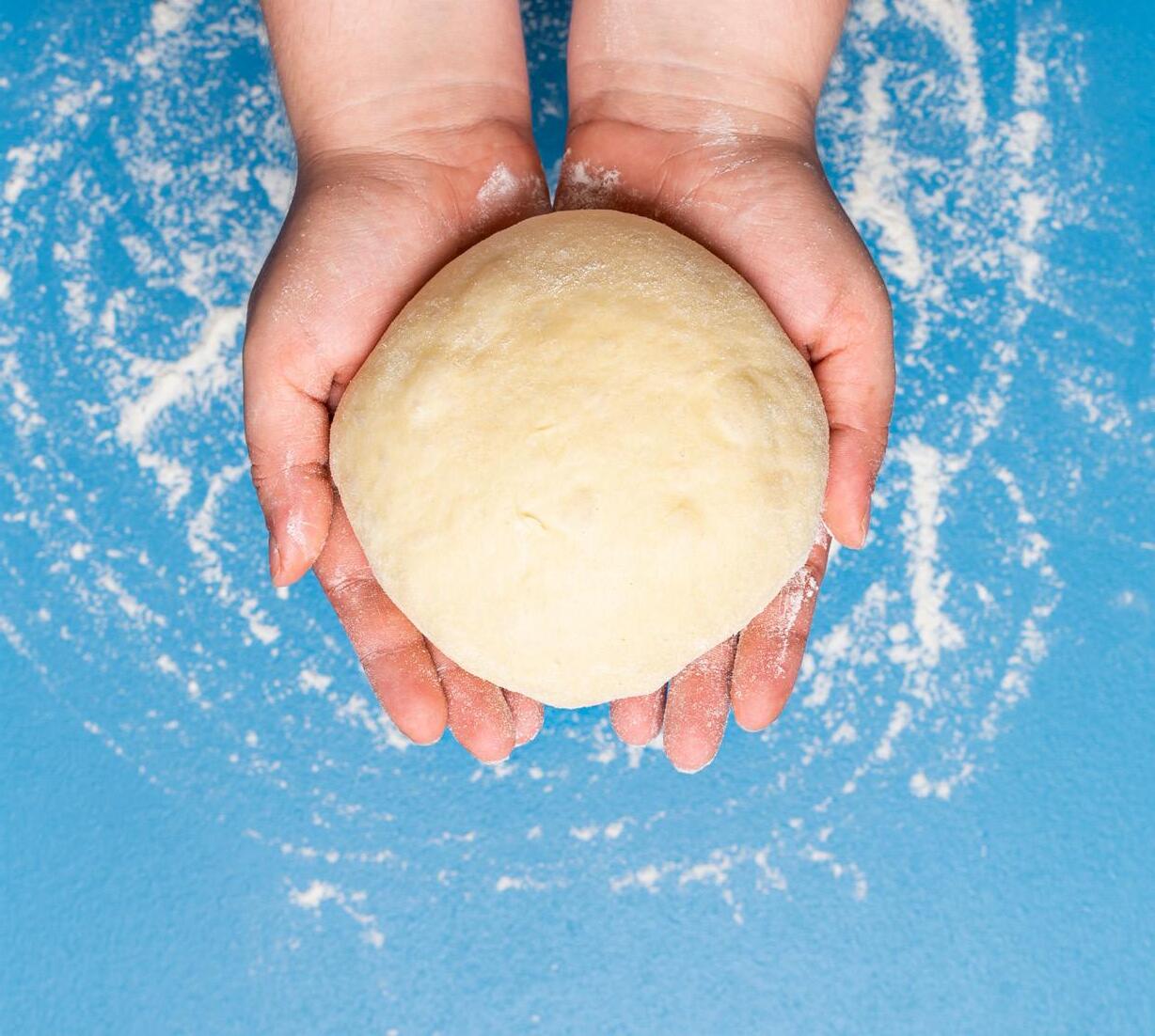
www.KosherSpirit.com 19
THE BROCHA AND PROCEDURE
When separating challah, the dough is covered with a cloth and the brocha of l’hafrish challah is recited over the mitzvah.
The nusach of the brocha is: Boruch atah Hashem, Elokeinu melech ha’olam, asher kidshanu b’mitzvosav v’tzivanu l’hafrish challah (or l’hafrish challah min ha’isah). Once the blessing was recited, a piece of dough should be separated (k’zayis) and one should say: “Harei zu challah” (This is Challah).
There are various opinions regarding the best nusach:
• The Shulchan Oruch says that one can say “l’hafrish terumah” (to separate terumah), which is the category to which the separated challah belongs.
• The Rema adds that one can say “l’hafrish challah”.
• The Taz brings an opinion which says that because there is an argument, one should combine both – “l’hafrish terumah challah”. There are many that use this nusach, mainly from Sefardic communities.
• The Shach adds that the best way is to say “l’hafrish terumah”.
The Oruch Hashulchon asks: If the best way is to say “l’hafrish terumah”, then why is the prevalent custom (in Ashkenazi communities) is to say “l’hafrish challah”? He answers that we do not give the challah to a Kohen these days, rather we burn it. Therefore, it is better to say “l’hafrish challah” since “terumah” implies that it is given to someone as their priestly portion.

The separated challah cannot be used for anything and must be burned. When the challah is burned, it should be done in a dedicated fire and not mixed with other foods. Practically speaking, the separated challah can be burned in the oven until it is charred and then removed from the oven before baking other foods. There should be a barrier (like foil) between the sepa-
rated challah and the oven rack. Alternatively, it can be wrapped in silver foil and burned on the stove top. If the challah cannot be burned, it should be double wrapped and disposed of respectfully.
If the separated portion of challah somehow gets mixed back into the dough, a Rav should be consulted and he may need to do hataras nedarim (nullifying a vow).
In the merit of upholding the mitzvah of hafrashas challah, may we soon merit to give our challah to the Kohanim serving in the Third Bais HaMikdash with the immediate geulah shleimah. ~
20 www.OK.org
Sugar
WHAT IS SUGAR?
Sugar (sucrose) is a sweetener found naturally in fruits, vegetables and nuts, and commercially extracted from the stems of sugar cane and the roots of sugar beets. The raw sugar contains molasses, which gives it a golden color, and during the refining process the molasses and impurities are removed resulting in refined white sugar. We are all familiar with sugar, as it is a staple ingredient in many of our homes. Sugar is used in almost all types of foods, such as baked goods, beverages, chocolates, and candy, among many others. The average American consumes over 100 pounds of sugar a year.
HOW IS SUGAR MADE?
Sugar cane is a plant that looks like bamboo and grows in tropical climates. The cane is harvested and sent to a sugar mill, where it is broken into small pieces and the juice is pressed out, clarified, concentrated, and crystallized.
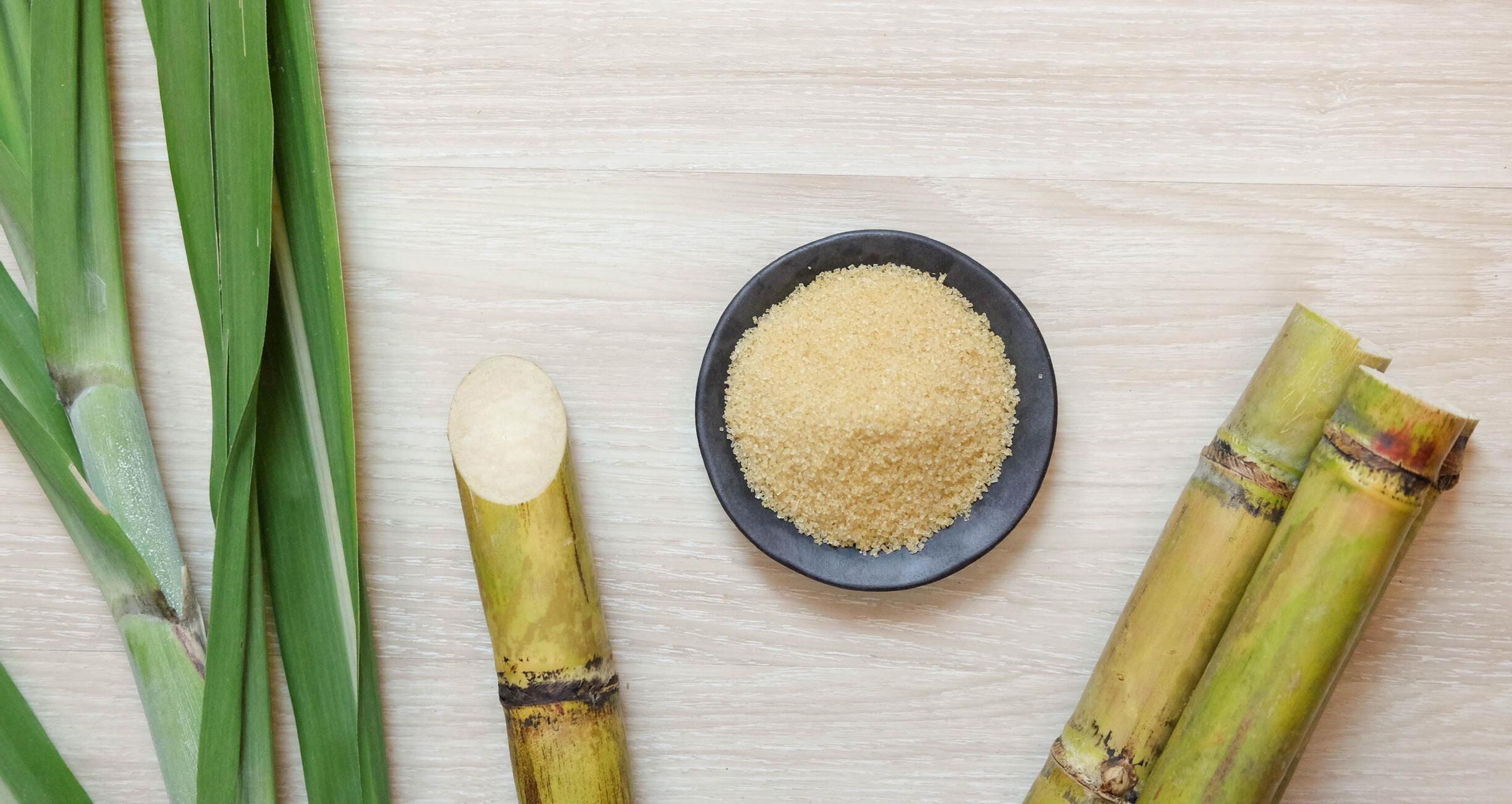
Sugar beets grow best in cooler climates. The top is cut off, washed, sliced and boiled in water to begin the extraction of sugar. It is then filtered and crystallized.
At this point, the sugar is considered raw and sent to the refinery. It is washed with warm sugar syrup to loosen the molasses film that covers the crystal. The sugar is separated in a centrifuge, melted in hot water, and clarified with lime and other chemicals. The impurities are then removed during the filtration process. The liquid sugar is evaporated into a concentrated liquid by boiling in a pan under a vacuum. Small sugar crystals are added to the pan in a process called seeding, which causes the sugar crystals to come out of the solution. The mixture is sent to a centrifuge to remove the water and the granulated sugar is dried in a dryer with hot air and packaged.
Brown sugar is refined sugar coated with sugar cane molasses.
Confectionary sugar is regular sugar that is milled to a smaller particle size. While it can be packaged as is, it is typically mixed with about 3% starch in order to avoid clumping. In North and South America, cornstarch is typically used, but in Europe, wheat starch is an option. In kosher for
Passover confectionary sugar the product can either be made without any starch, or with kosher for Passover tapioca starch or another anticaking agent, such as tricalcium phosphate.
IS SUGAR KOSHER?
During the sugar manufacturing process, a lot of foam can build up, which disturbs the refining process. Therefore, antifoam is used to reduce the foam. Antifoam can be sourced from vegetable or animal sources. The amount used is small and will be botul, but in ~ certified refineries only kosher approved antifoam is used.
Bone Char - some refineries use bone char to filter the sugar. The bone char is made from crushed animal bones that are completely burned (similar to the ash left behind after a camp fire). This is not a kashrus concern because the bone char is not edible, and will not add “flavor” to the sugar. Additionally, the process is done without any heat and the char is completely removed from the sugar at the end. A similar question came up about 180 years ago when the Jewish community discovered that blood was used to refine sugar and the amount used was about 2%, which is above shiur bittul. The Tzemach Tzedek explained in his Shaalos V’Teshuvos (Yoreh Deah 67-68) why it was not a kashrus concern, for the same reasons mentioned above regarding bone char.
Bishul Yisroel is not a requirement for sugar because the sugar cane is edible raw. Sugar beets, which are not edible raw, also do not require bishul Yisroel because the sugar is always a used as food additive and is not an important food by itself.
The rework of confectionary sugar is a potential Passover concern. When the finished product is not up to specifications, the company usually reprocesses the confectionary sugar with the raw sugar to avoid waste. During the filtration and refining process the starch is completely removed and will not be present in the finished product. Once the confectionary sugar is mixed with regular sugar, the starch will always be nullified, but this is a potential Passover concern in places where wheat starch can be used. ~
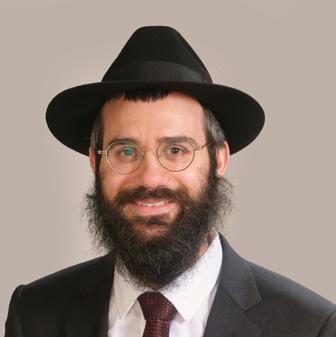
a
www.KosherSpirit.com 21
closer look
Rabbi Sholom Ber Hendel, ~ Kosher Executive Kashrus Vaad and Executive Rabbinic Coordinator
One Day
A Talk by the Lubavitcher Rebbe
on the Second Day of Rosh
5739 (1978)
Torah Law considers the two days of Rosh Hashanah as “one long day”. The Previous Rebbe stressed that the expression used, “day”, was chosen carefully. The term ‘day’ communicates the concept of brightness and light. All forty-eight hours of Rosh Hashanah are permeated with light.1 The concept stretches beyond the abstract realm but has many practical ramifications. Since Rosh Hashanah is one long ‘day’, the Previous Rebbe counseled his followers to minimize the time spent sleeping on Rosh Hashanah.
Even though the existence of night and darkness on Rosh Hashanah is an observable phenomenon (and recognized by Torah Law as well),2 from a spiritual perspective, that darkness is subordinate to the primary quality which is one of brightness and illumination.
Particularly after the Previous Rebbe had revealed that concept and stressed the idea of Rosh Hashanah consisting of 48 hours of day, we, his followers, must spread the idea throughout the world and publicize it in whatever ways possible. These activities will hasten the coming of Mashiach.3
1 This aspect of light was emphasized on the first Rosh Hashanah (the day of man’s creation). During the following night, there was no darkness.
2 Since the purpose of Torah is to elevate and refine the world, it envelops itself within the boundaries and limitation of worldly experience, in order to internalize therein sanctity and holiness.

3 The Rambam writes that the greatness of the Messianic era will extend beyond merely the Jewish people’s achievement of national autonomy and freedom. The ultimate goal of the Messianic era will be the ability to study Torah and fulfill mitzvos. Then Torah study will be on a higher level and in the Rambam’s words, “Then the Jewish people will appreciate the knowledge of their Creator”.
The Alter Rebbe codifies the law that on Erev Shabbos one is required to taste the food prepared for the Sabbath (and one must taste from every dish). The same principle applies in a figurative sense. The food (a commonly used metaphor for Torah) of the Messianic era (the Sabbath of the entire chronicle of time) must be tasted Erev Shabbos (in the time immediately preceding Mashiach’s coming).Now, one must taste the levels of awareness and understanding to be taught by Mashiach. These insights were revealed by the previous Rebbeim in their Maamarim and likewise in their instructions for behavior.
Implied within the concept of Rosh Hashanah being a 48-hour day is that the day of its conclusion affects the first day as well. This year, the second day of Rosh Hashanah falls on Tuesday. In the Torah narrative of creation, Tuesday (the third day) is distinguished from all the other days of the week. The Torah records the expression “and Gd saw it was good” twice on that day.
Commenting on that fact, the Talmud explains that the repetition of the expression “Gd saw that it was good” refers to two types of good: Tov lashamayim and Tov labrios — good to heavens (i.e., in matters between man and Gd) and good to the creations (good in matters between man and man).
During the last year (particularly on Rosh Hashanah and Shabbos Shuvah) that concept was underscored at great length. As mentioned in the previous farbrengen, it is our responsibility now to compensate for the deficiencies of the service of previous years. 4 Therefore, the aspects of ‘Tov lashamayim’ and ‘Tov labrios’ which were unfulfilled must be completed.
The term ‘La-brios’ also refers to the non-Jews. They also are judged on Rosh Hashanah and are given the powers to fulfill their task of assisting and enabling Jews to observe Torah and mitzvos.
In particular, this refers to the situation in Eretz Yisrael5 “the land where the eyes of the Lrd are upon it, from the beginning of the year until the end of the year”.
In Messianic times, the gentiles will express their raison d’être and help the Jews learn Torah and fulfill mitzvos. May that situation also prevail in these final days of Galus and may the strength of those actions hasten the coming of Mashiach speedily in our days.
A free translation from a talk of the Lubavitcher Rebbe, Rabbi Menachem M. Schneerson, of righteous memory.
The content in this page is produced by Chabad.org, and is copyrighted by the author and/or Chabad.org. If you enjoyed this article, we encourage you to distribute it further, provided that you do not revise any part of it, and you include this note, credit the author, and link to www.chabad.org. If you wish to republish this article in a periodical, book, or website, please email permissions@chabad.org.
4 The Hebrew word meaning to compensate, ‘lehashlim’, can also be translated as ‘bring to completion and perfection’. A Jew’s service has to rise beyond mere compensation, i.e., fulfilling needs and lacks which are present but must also lead him to self-perfection and completion.
The same principle applies in the realm of tzedakah. There is one level of tzedakah which fulfills the person’s needs. A second goes beyond those needs and will even make the recipient rich.
The same principle applies regarding the judgment of the Jewish people. The Talmud explains that if one says he will provide food for a Jewish worker, he must specify the type of meal he will feed him. If it is not specified, one will never fulfill his obligation because every Jew, because he is the son of Abraham, Isaac, and Jacob or the daughter of Sarah, Rivkah, Rachel and Leah, deserves more than the greatest feasts of King Solomon. Similarly, they deserve a “Kesivah VaChasimah Tovah” in physical and spiritual things.
5 The Land of Israel relates intrinsically to Rosh Hashanah. Kabbalah explains that Rosh Hashanah deals with the level of “Malchus” in the realm of time. The expression of that level in the realm of space is the land of Israel (and in soul, the Jewish people).
22 www.OK.org CHASSIDIC INSIGHTS
Hashanah,
Printed in Sichos In English, Volume 2
ZTZ”L
Hashem has three books in which He inscribes people on Rosh Hashanah. We see a hint to these books in the Torah when Moshe Rabbeinu pleas for forgiveness on behalf of the Jewish people after the cheit haegel. Moshe Rabbeinu says to Hashem, “Either forgive Klal Yisroel or erase me from the books that you wrote.
By Rabbi Chaim Fogelman
אנ ינחמ – “Erase me” refers to the book of reshaim
ךרפסמ – Refers to the book of tzaddikim (your treasured book)
תבתכ רשא – Refers to the book of beinonim (because it is written but not yet signed)
The question is: Why would Moshe Rabbeinu want to be erased from all three books? Why couldn’t he just be left in the book of tzaddikim?
As we know in the ledgers of a business, all of the income and expenses need to be recorded. If anything is erased, it calls the legitimacy of the entire ledger into question and can even disqualify it completely. Moshe Rabbeinu knew that if his name was erased, it would cause all three books to come under question and Hashem would not be able to use them to judge the Jewish people. Therefore, Klal Yisroel would have to be forgiven either way.
 — Gemara Rosh Hashanah
— Gemara Rosh Hashanah
www.KosherSpirit.com 23
SOUL NUTRITION
ךרפסמ אנ ינחמ״ ”תבתכ רשא
2 cutting-edge Kosher apps... redesigned and reimagined.

”Kosher Investigator beautifully captures Rabbi Berel Levy’s remarkable contributions to kosher food – and, more generally, to Judaism. A skilled investigator himself, author Dovid Zakilowski draws on oral interviews, obscure printed sources, and Rabbi Levy’s previously unknown personal papers to provide a revelatory account of his life. Written with great sympathy – and not shying away from controversial topics – this carefully researched book is a page-turner that readers will thoroughly enjoy.”
—Dr. Roger Horowitz author of Kosher USA: How Coke became kosher and other tales of modern food.
The Kosher Vegetable Checking Guide
”Kosher Investigator pays honor to a founding father of modern industrial kosher certification. Rabbi Berel Levy’s passionate commitment to yiddishkeit and his keen powers of investigation helped transform the American kosher certification system into a model of reliable private regulation. Dovid Zaklikowski’s inspiring account also reveals the love of Torah and Am Yisroel that motivated Rabbi Levy’s many achievements.“
—Professor Timothy D. Lytton author of Kosher: Private Regulation in the Age of Industrial Food
For the latest in Kosher news:
follow us on Twitter
@KosherAlerts
follow us on Facebook facebook.com/okkosher
2 cutting-edge Kosher Apps, now redesigned and available as a free download on Google Play or the App Store

The Kosher Food and Restaurant Guide

KOSHER CERTIFICATION ~ Kosher Spirit, 391 Troy Avenue • Brooklyn, NY 11213 718-756-7500 • info@ok.org • www.ok.org
Coming Soon November 2017!























 By: Rabbi Sholom Ber Lepkivker, ~ Rabbinic Coordinator
By: Rabbi Sholom Ber Lepkivker, ~ Rabbinic Coordinator












 — Gemara Rosh Hashanah
— Gemara Rosh Hashanah


